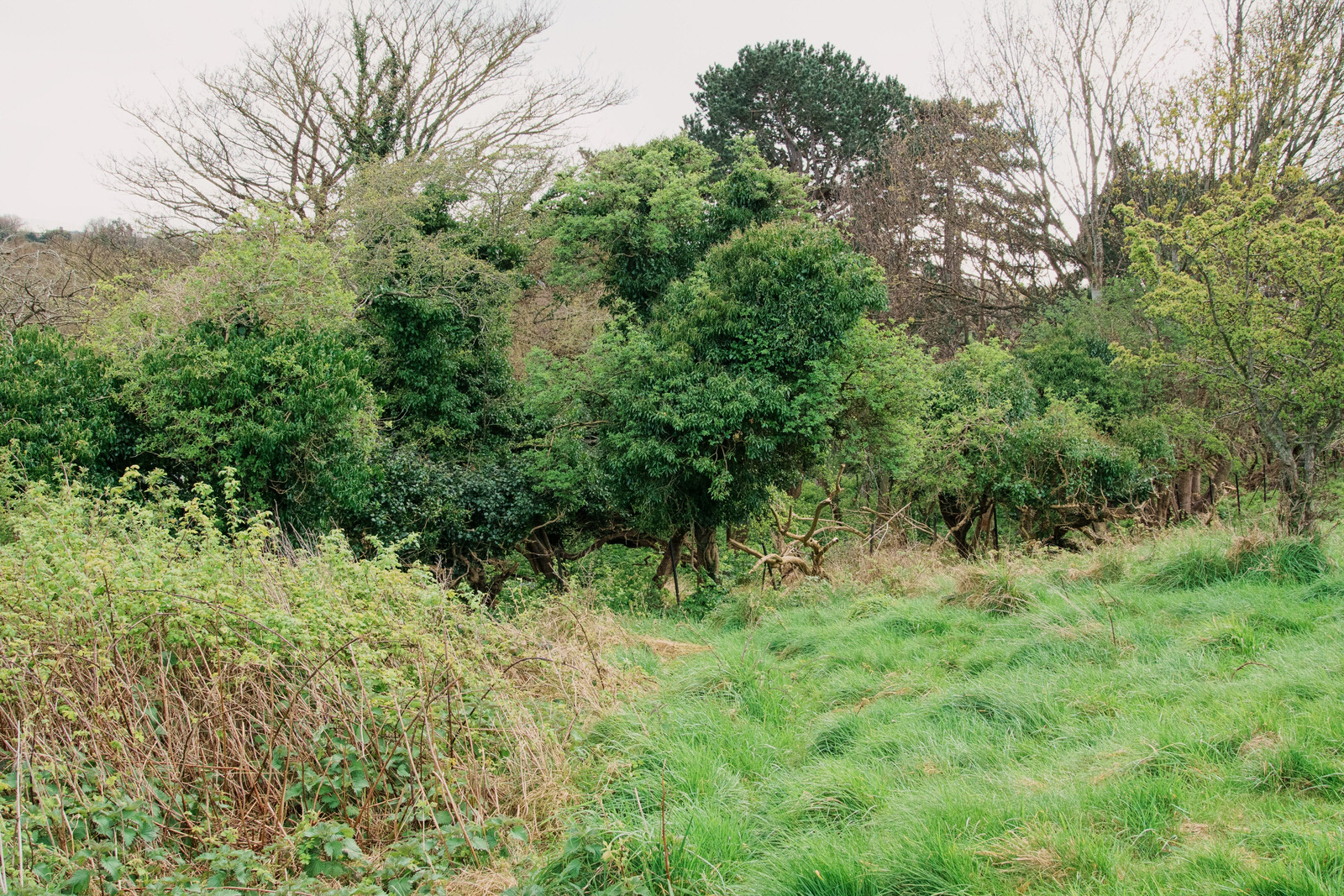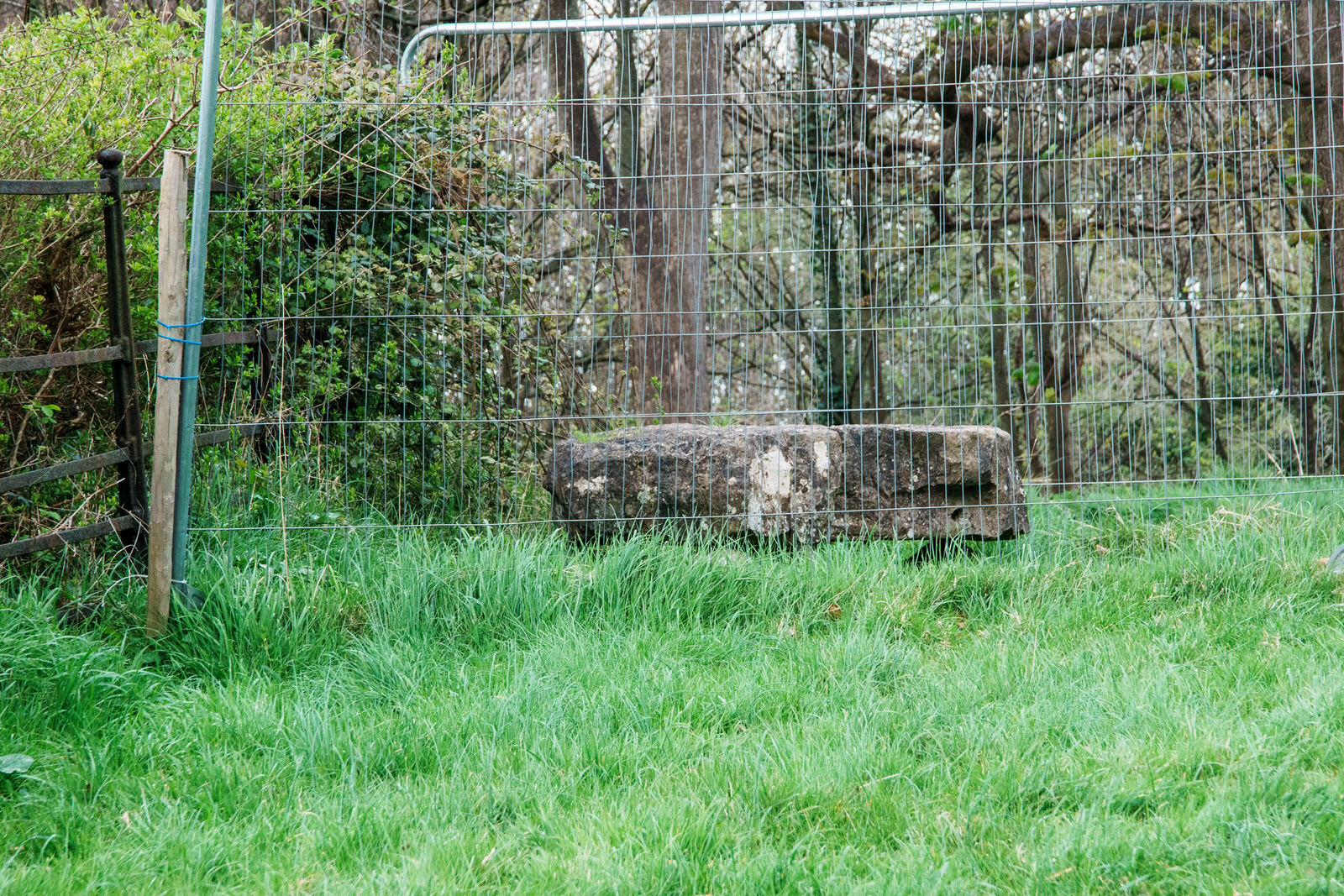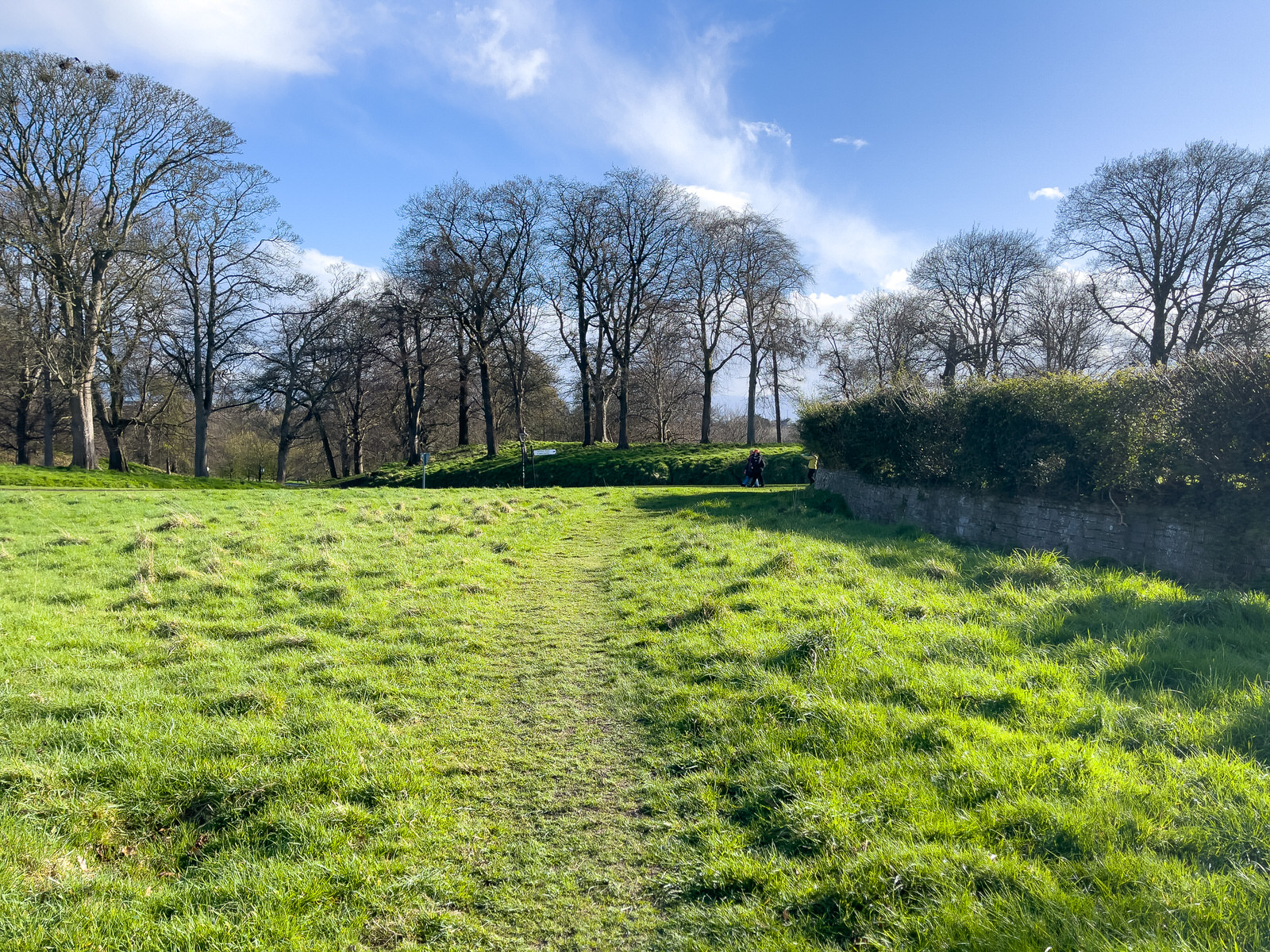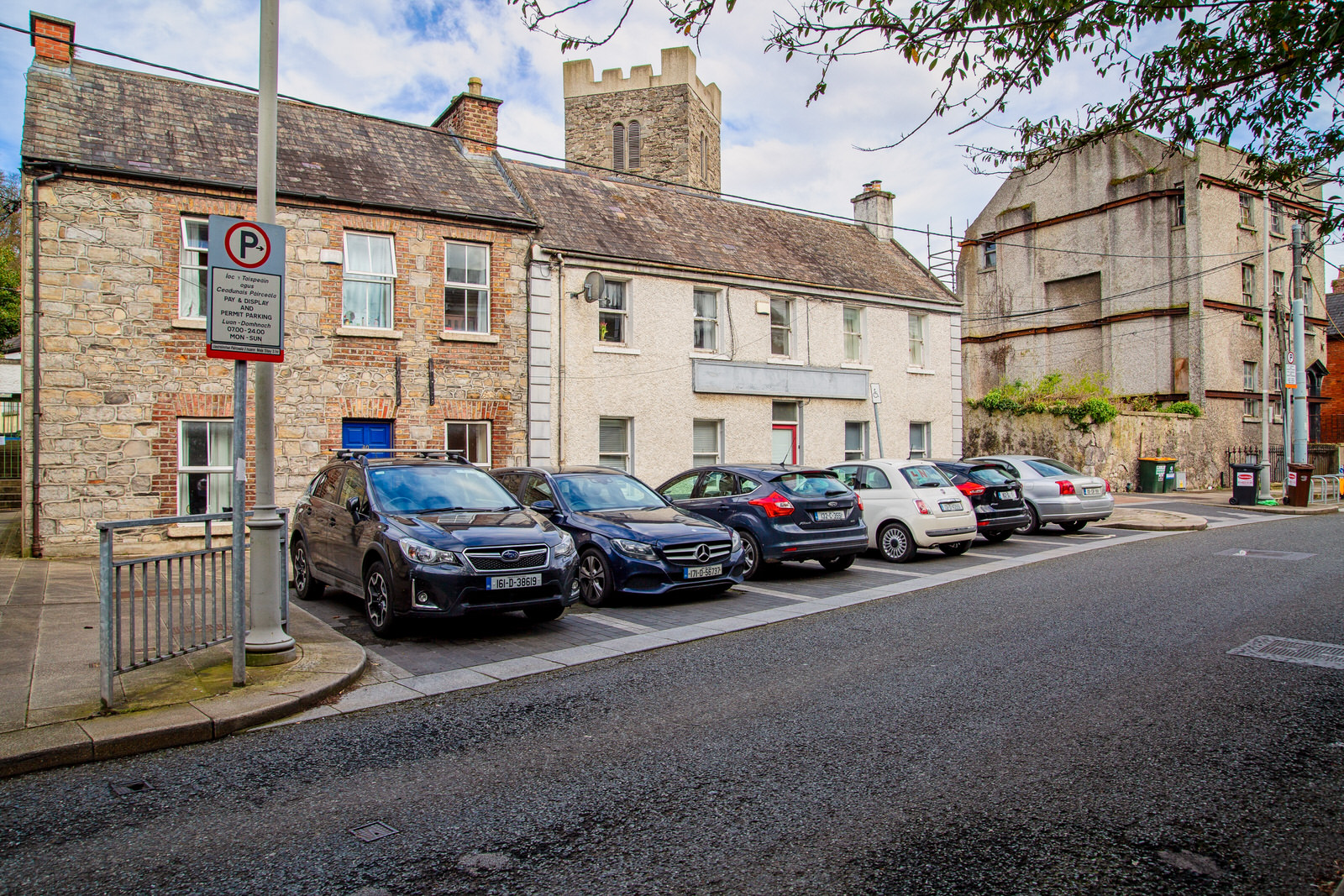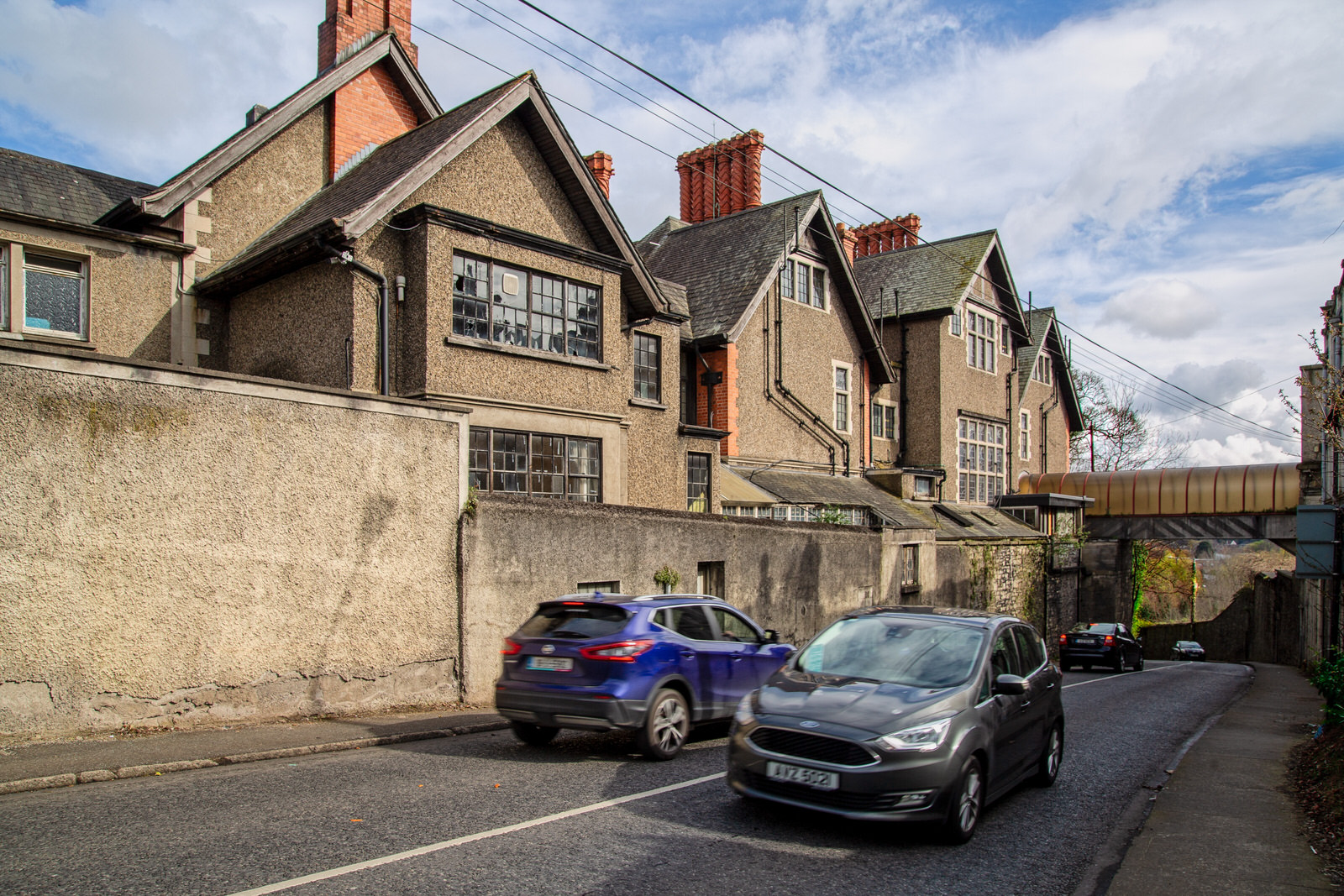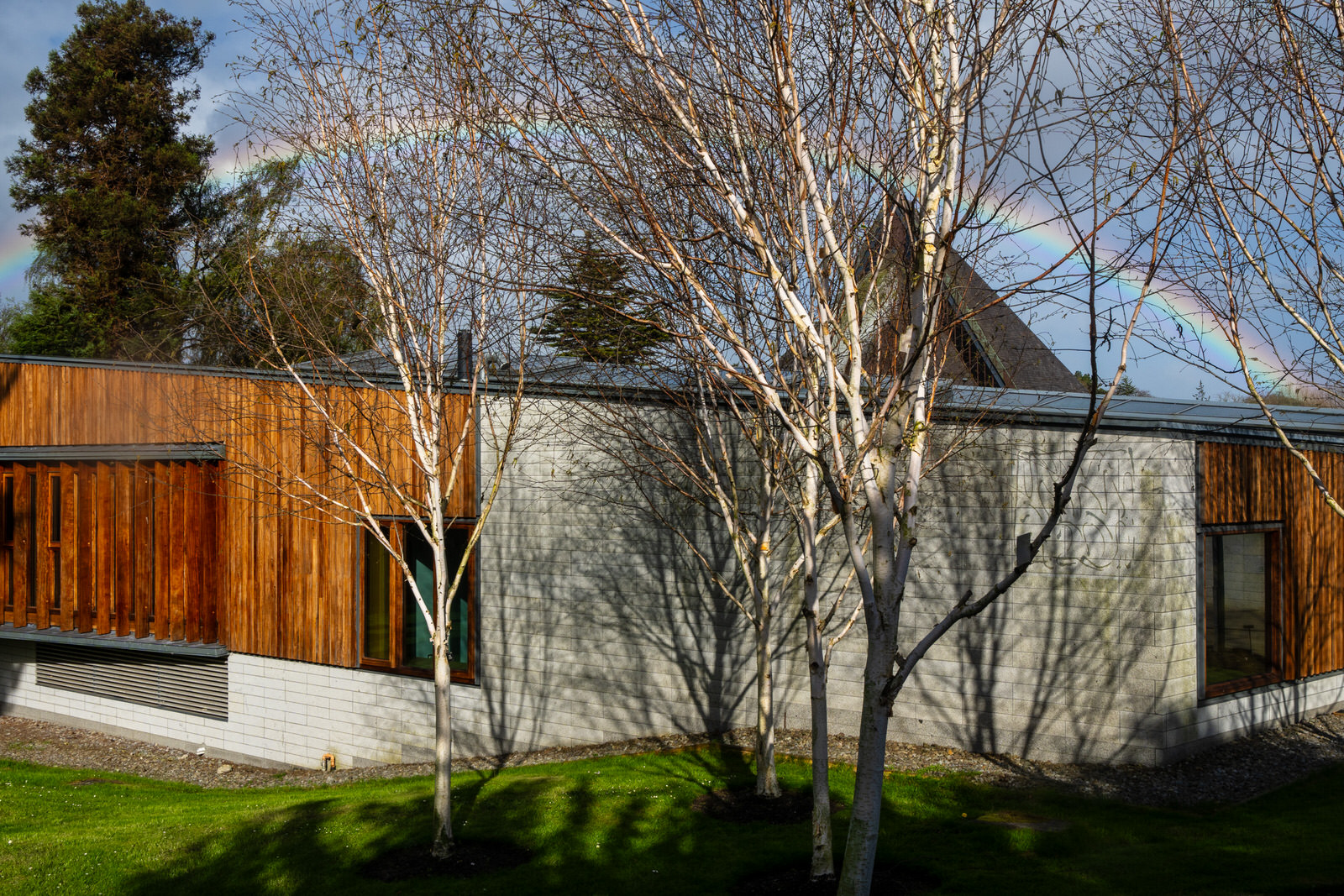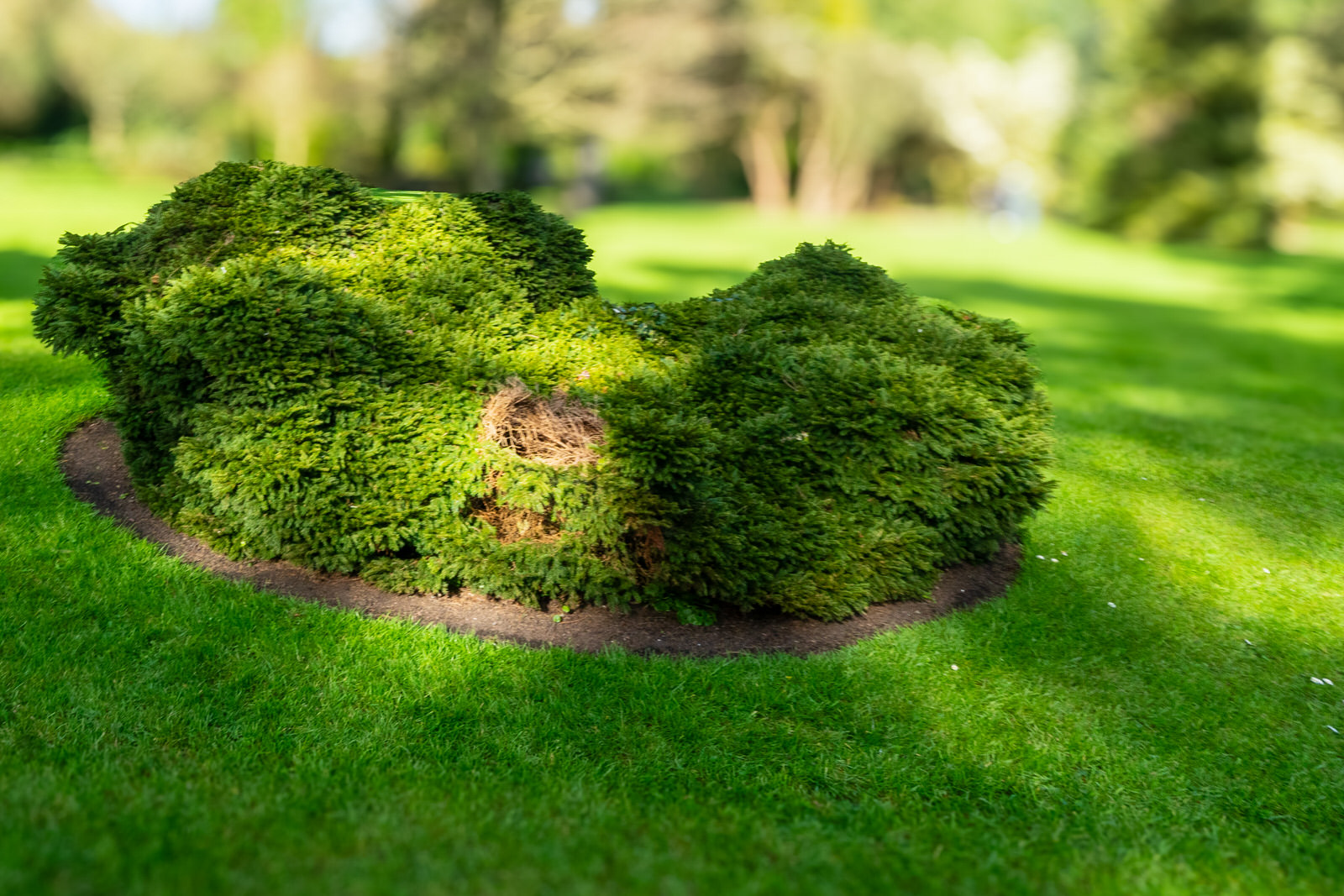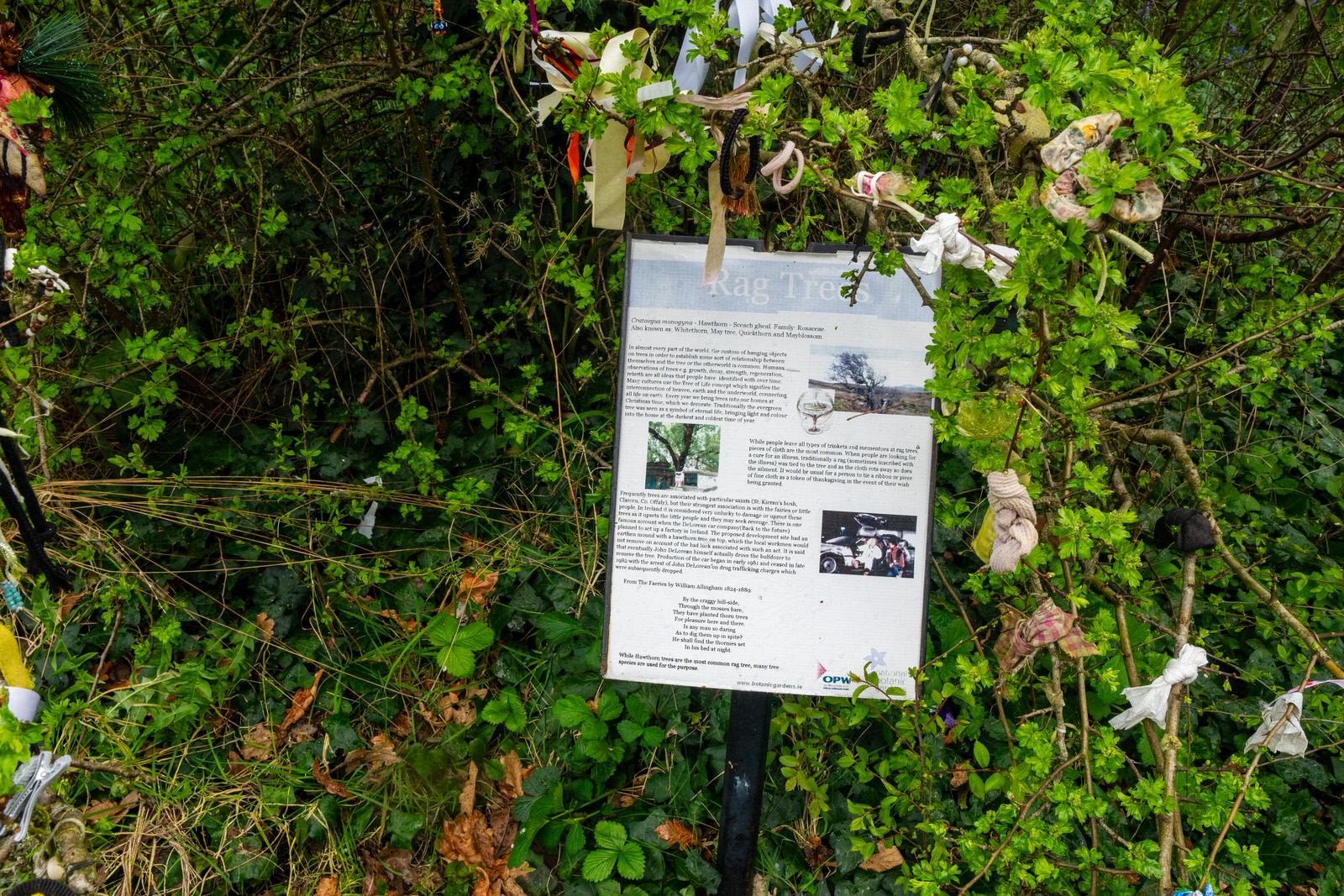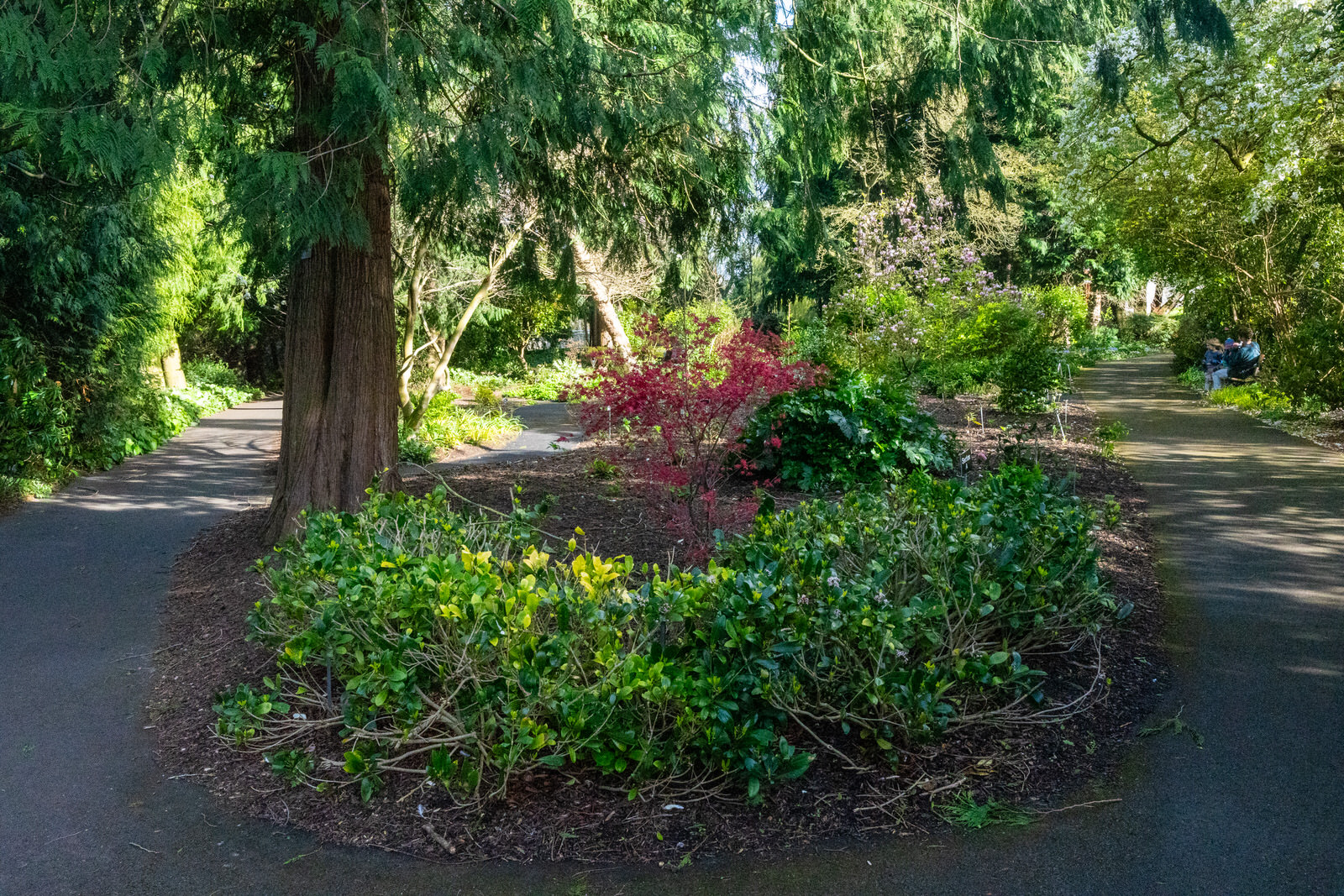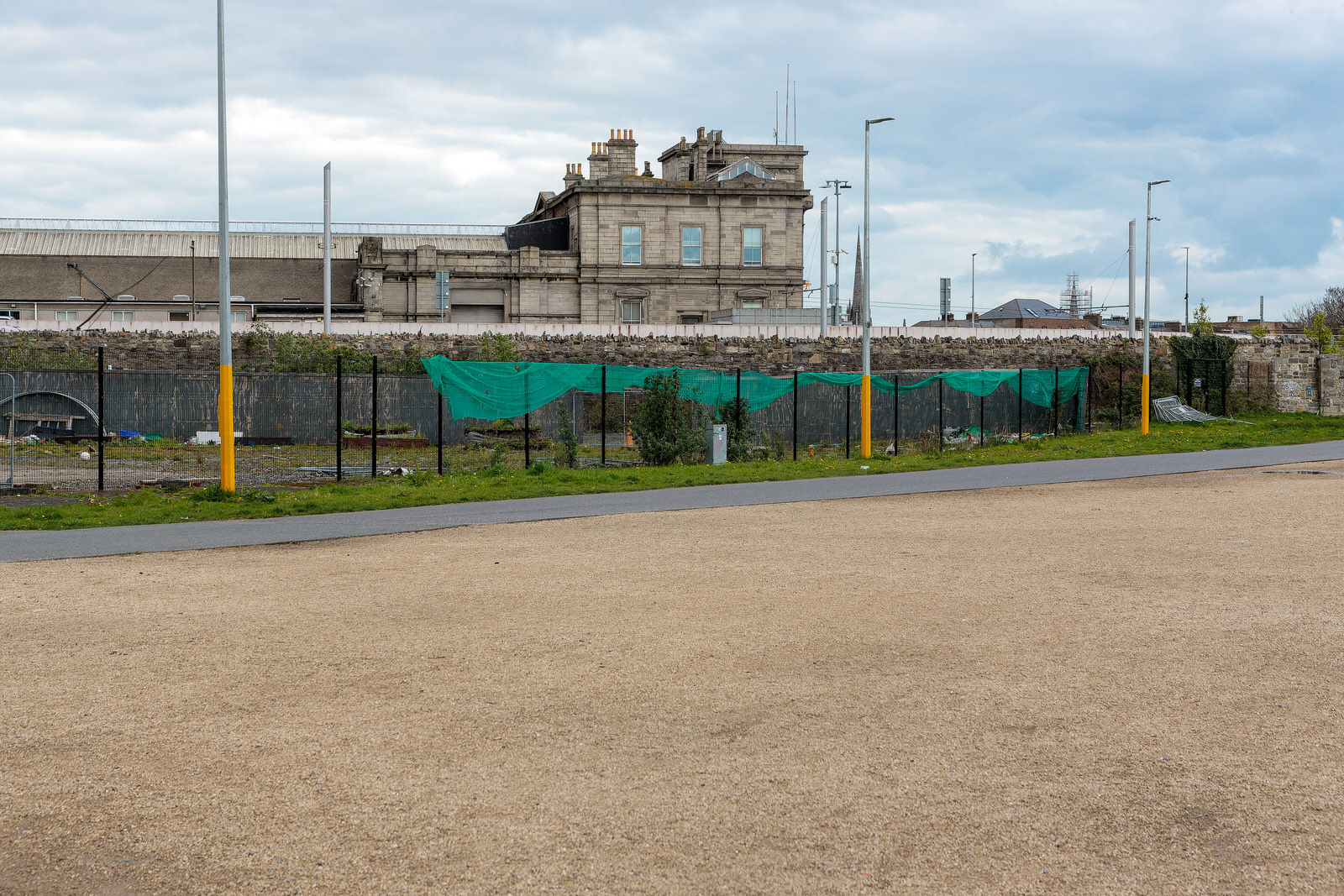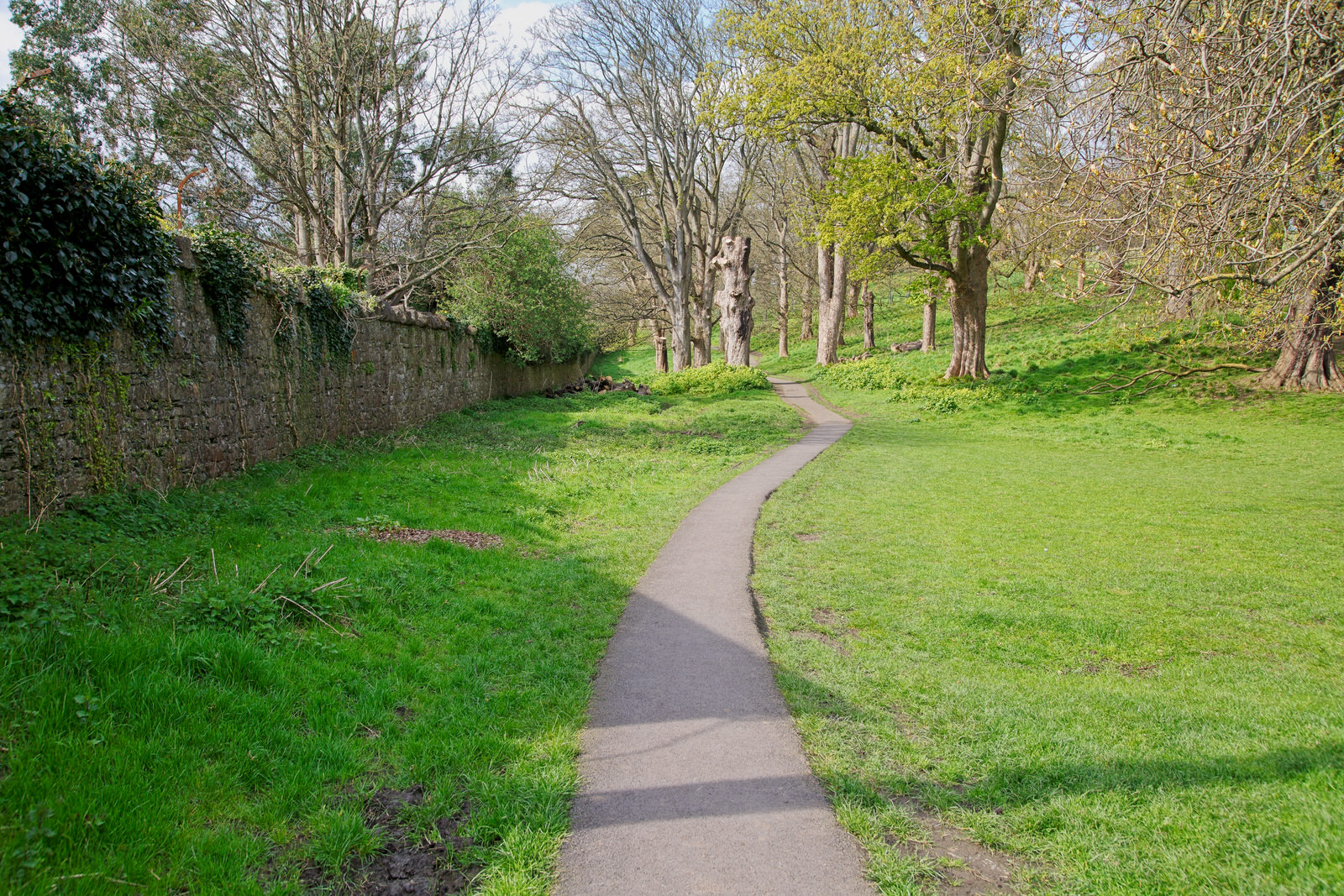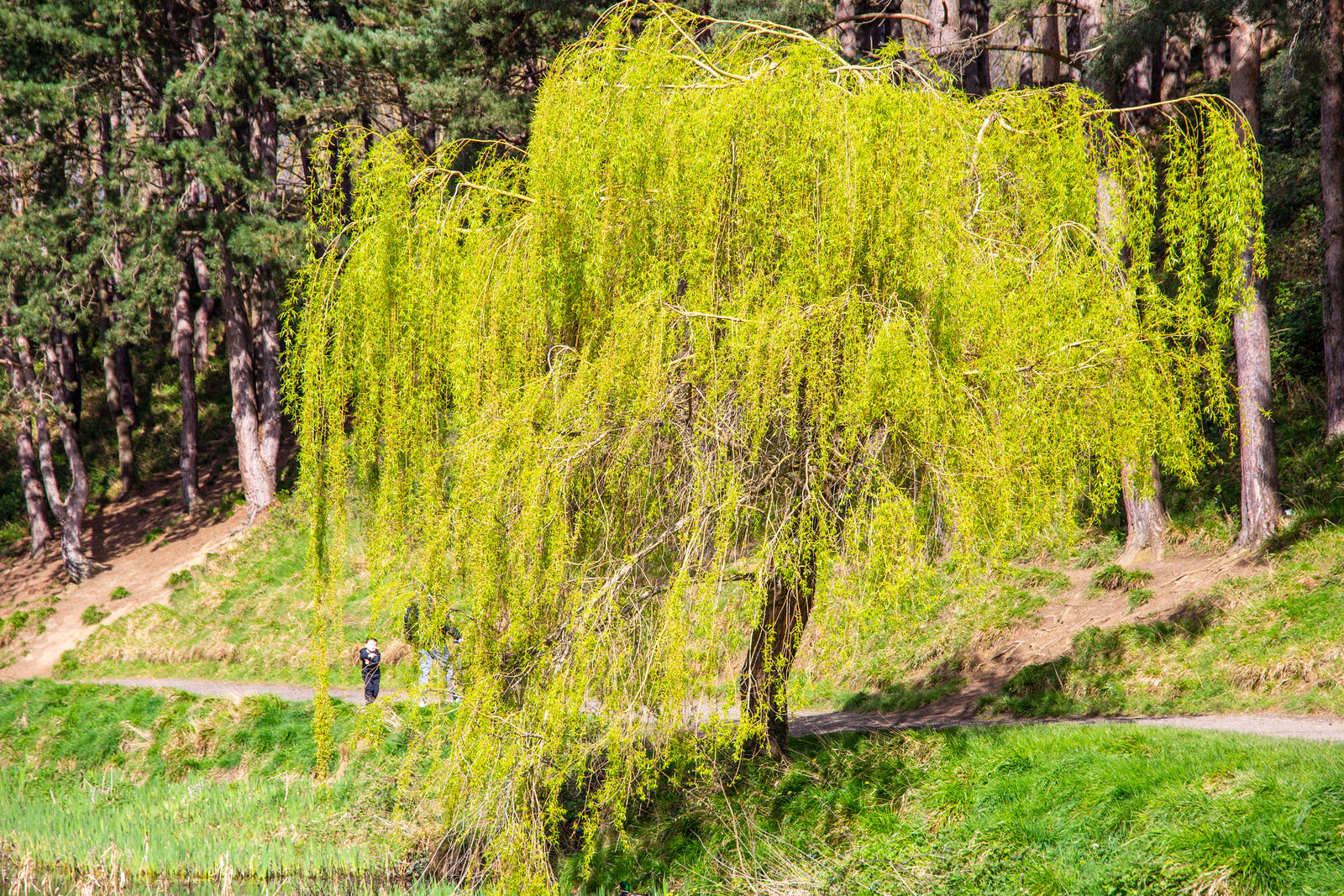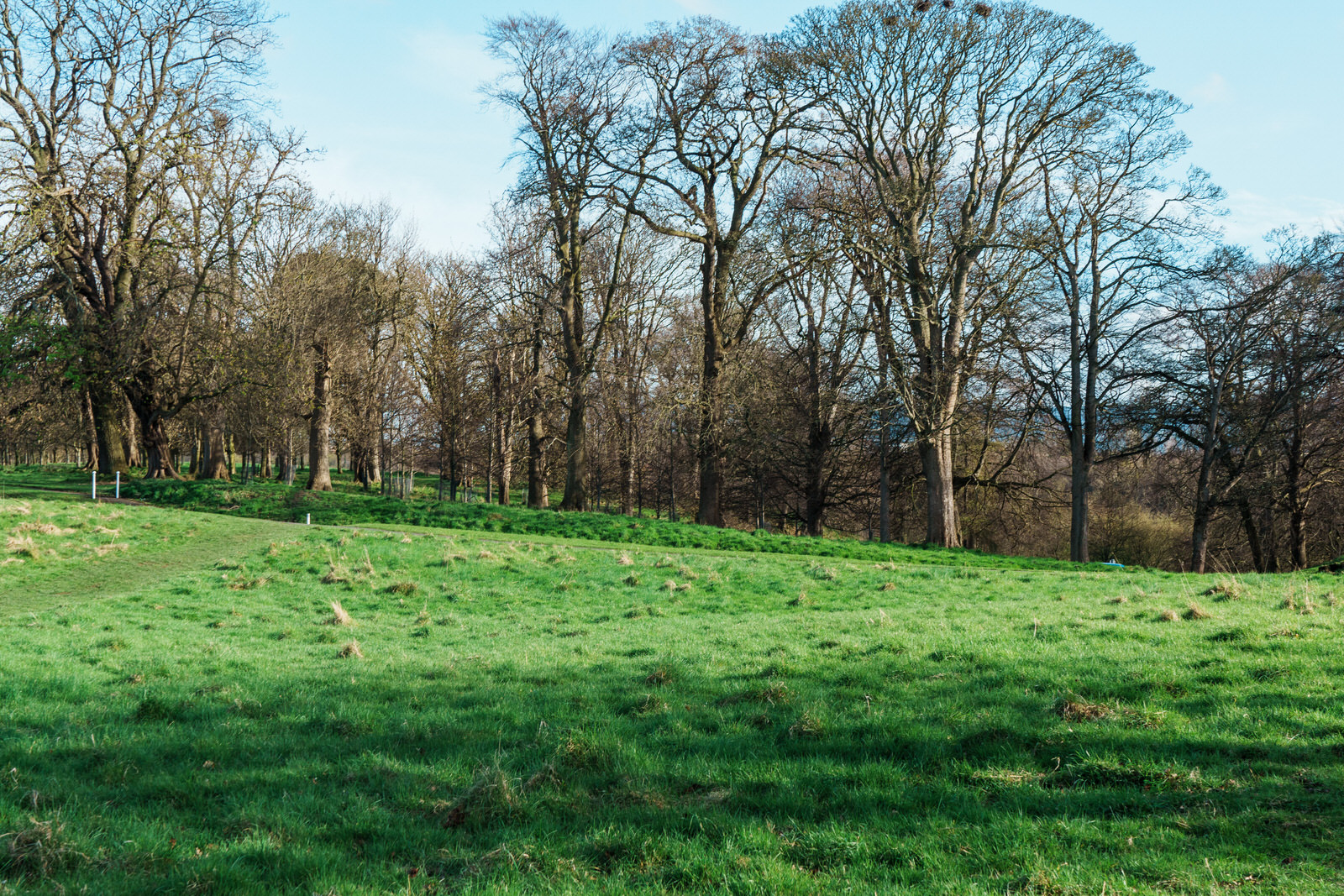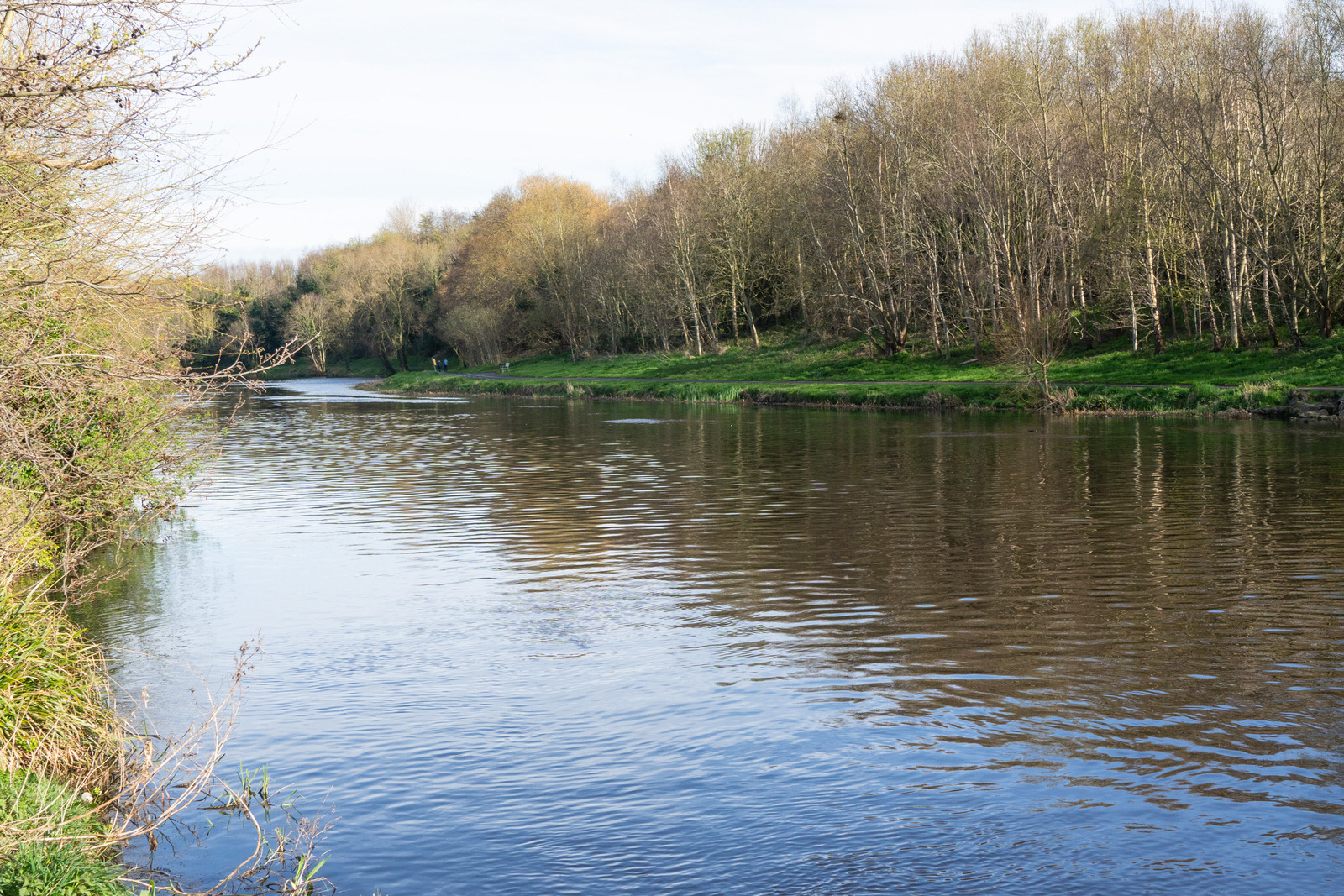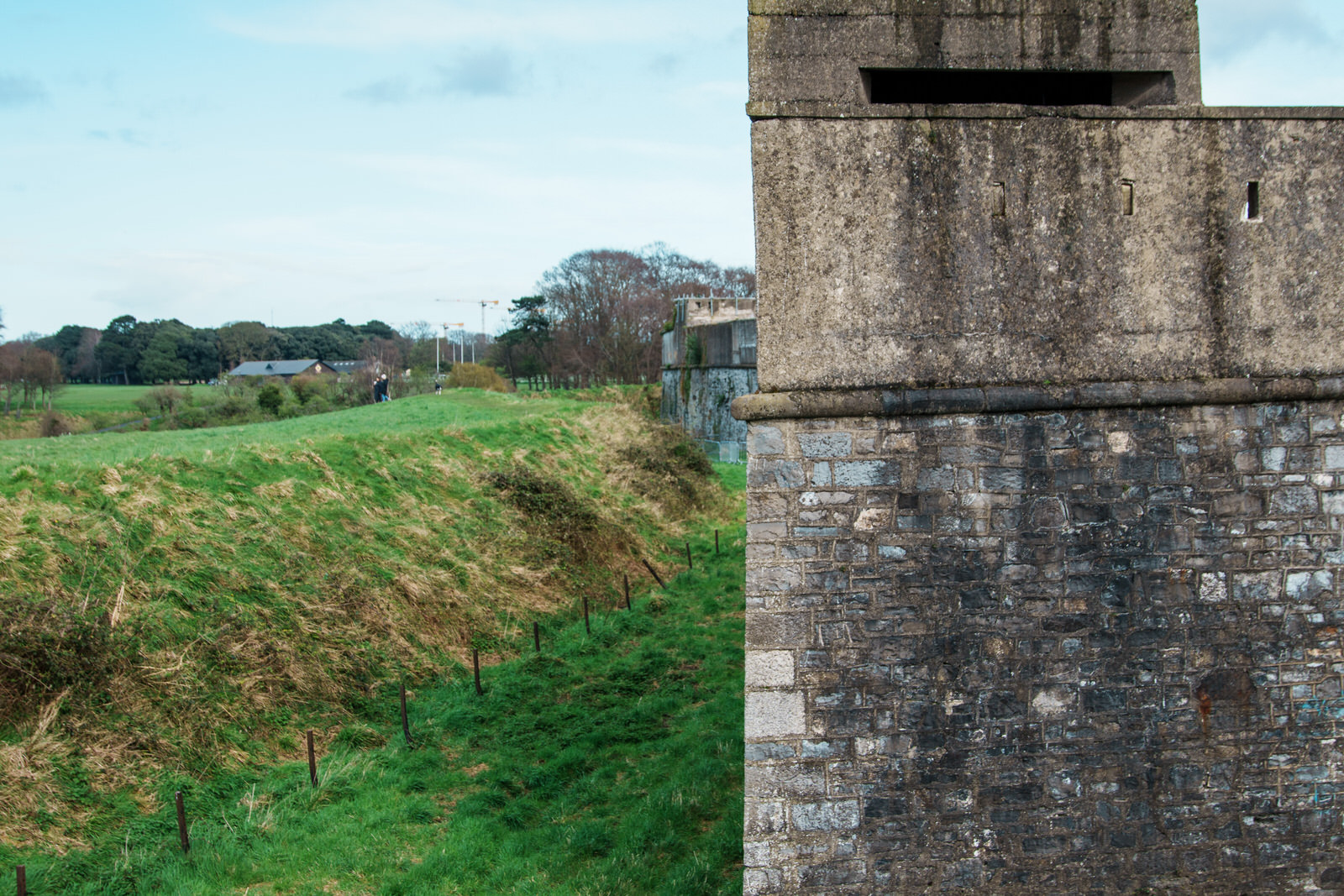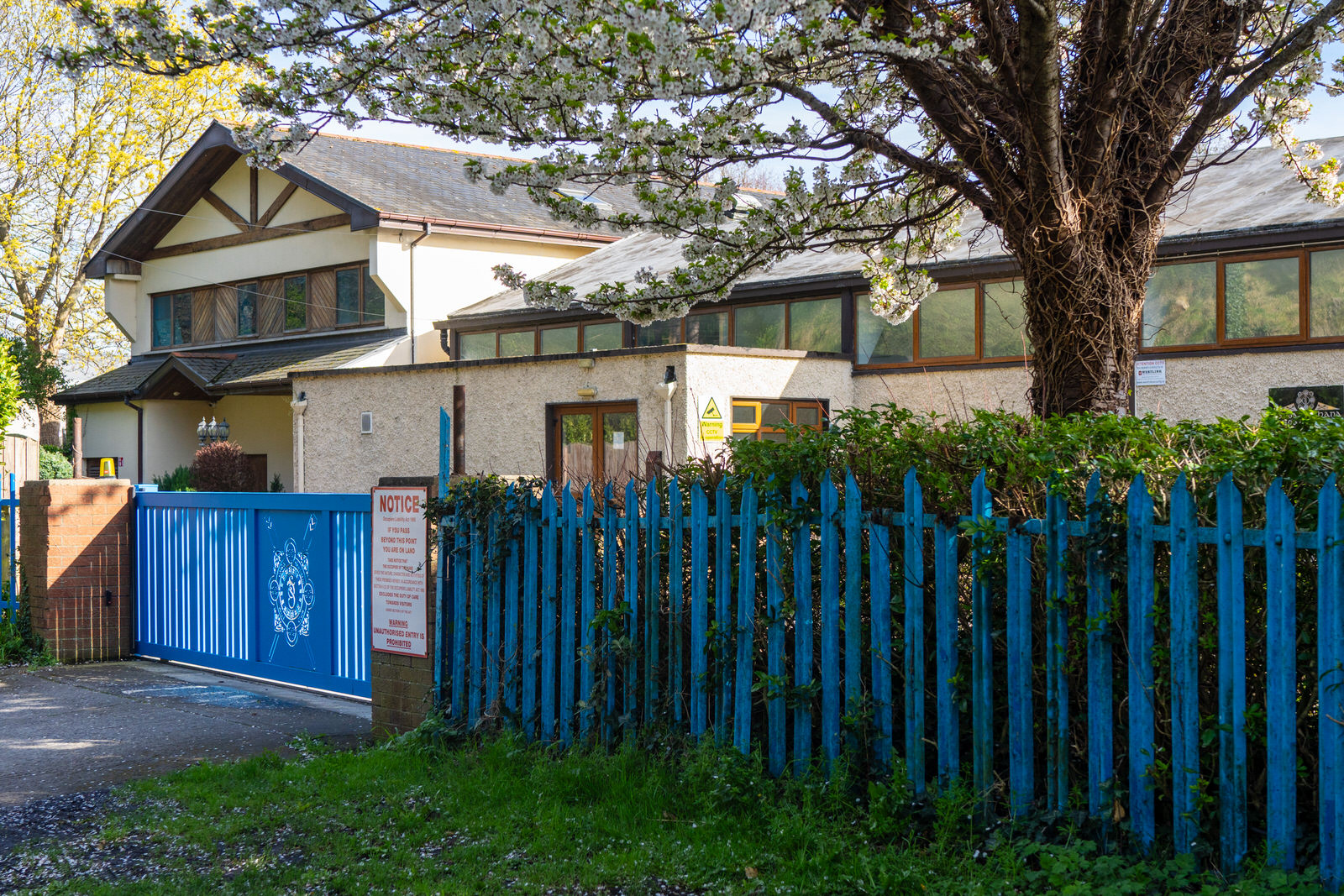The old house at 34 Main Street in Chapelizod is a significant historical building.
It's a detached, three-bay, three-storey early Georgian house over a raised basement, built circa 1740.
The house is well-proportioned and contributes to the eclectic character of Chapelizod.
It was the early childhood home of Joseph Sheridan Le Fanu, a renowned Gothic horror writer.
The house also features prominently in Le Fanu's 1863 novel "The House by the Churchyard".
Unfortunately, due to neglect, the building's internal floors have collapsed.
It's a detached, three-bay, three-storey early Georgian house over a raised basement, built circa 1740.
The house is well-proportioned and contributes to the eclectic character of Chapelizod.
It was the early childhood home of Joseph Sheridan Le Fanu, a renowned Gothic horror writer.
The house also features prominently in Le Fanu's 1863 novel "The House by the Churchyard".
Unfortunately, due to neglect, the building's internal floors have collapsed.
Today, I visited Knockmaroon Hill, intrigued by the history of Glenmaroon House.
Knockmaroon Hill, a historical gem in Dublin, is home to the grand estate of Glenmaroon House. This magnificent Edwardian house, with its Tudor-style architecture, was once the residence of Arthur Guinness, a member of the renowned Guinness brewing family. Originally built in 1905 and later extended, Glenmaroon House boasts luxurious features like wood panelling, stained glass windows, and even a swimming pool – all testaments to the grandeur of a bygone era.
Glenmaroon House is a complex of two halves – the North House and the South House – located on either side of Knockmaroon Hill. The South House, formerly known as ‘Knockmaroon Lodge,’ is on the River Liffey side of the road and predates the 1850s. The North House, on the Phoenix Park side of the road, was built early in the 20th century by the Honourable (Arthur) Ernest Guinness.
Two pedestrian bridges that connected Glenmaroon House and Knockmaroon House were planned to be removed. These bridges, which crossed over the roadway on Knockmaroon Hill, connected what are now two large old vacant houses. One of the bridges, dating back more than 100 years, had intricate and attractive wrought iron features and a spiral staircase. It had not been used for at least 60 years. The other structure was a covered bridge that replaced an earlier covered bridge damaged in traffic collisions.
Fingal County Council granted permission to developers Dun Ardagh Holdings Ltd to remove the bridges. The stipulation was that the older footbridge and its spiral staircase be refurbished and re-erected elsewhere on the property. However, the Chapelizod Old Village Association appealed the decision, claiming the council did not adequately consider the conservation, road safety, and amenity aspects of their removal.
Despite the appeal, it appears that the decision to remove the bridges was upheld. The developers argued that there is a current ban on vehicles over three tonnes using the road and transport planning advice had declared removing the bridges would have “no negative transport impact”. The council stated that removing the bridges would facilitate the re-use of the vacant houses.
The Knockmaroon Estate was bought by a member of the Guinness family, Lord Moyne, in 1884; the Guinness family have occupied it ever since. The last Lord Moyne was married twice. His first wife, Lady Diana Mosley, bore him two sons – Jonathan Guinness, the present Lord Moyne, and the Honourable Desmond Guinness, of Leixlip Castle, who was key to establishing the Irish Georgian Society in 1958. The present occupant of Knockmaroon is the Honourable Kieran Guinness, part of the second family.
The Knockmaroon estate is bounded by Farmleigh, Castleknock College, the Lower Road and The Glen. A lodge in a similar style to the main gate lodge stands on the Tower road, opposite Farmleigh’s Clocktower, although that entrance was never used.
The history of Glenmaroon House doesn’t end with the Guinness family. Over time, it transitioned into an important part of the local community. The house, along with the interconnected Knockmaroon Lodge, became incorporated into the Holy Angels Convent School. Additionally, it was linked with the adjacent St. Louise’s Care Centre, likely providing a place of residence and support for those associated with the centre.
The information provided indicates that Glenmaroon House and associated buildings are now vacant. This raises the question of why the Holy Angels Convent School and St. Louise’s Care Centre may have closed or relocated.
Here are some potential factors to consider:
Changing Demographics and Needs: Dublin, like many cities, has experienced shifts in population and social requirements. The original purposes of these institutions may no longer align with current community needs.
Financial Considerations: Operating large historical buildings and providing care services can be costly. Financial challenges may have forced a change.
Alternative Facilities: More modern, purpose-built schools and care centres may have been developed elsewhere.
Update: St. Louise’s Care Centre, at a new location, now comprises nine specially designed bungalows providing 54 private bedrooms, a Day Care Centre, and a Restaurant.
Knockmaroon Hill, a historical gem in Dublin, is home to the grand estate of Glenmaroon House. This magnificent Edwardian house, with its Tudor-style architecture, was once the residence of Arthur Guinness, a member of the renowned Guinness brewing family. Originally built in 1905 and later extended, Glenmaroon House boasts luxurious features like wood panelling, stained glass windows, and even a swimming pool – all testaments to the grandeur of a bygone era.
Glenmaroon House is a complex of two halves – the North House and the South House – located on either side of Knockmaroon Hill. The South House, formerly known as ‘Knockmaroon Lodge,’ is on the River Liffey side of the road and predates the 1850s. The North House, on the Phoenix Park side of the road, was built early in the 20th century by the Honourable (Arthur) Ernest Guinness.
Two pedestrian bridges that connected Glenmaroon House and Knockmaroon House were planned to be removed. These bridges, which crossed over the roadway on Knockmaroon Hill, connected what are now two large old vacant houses. One of the bridges, dating back more than 100 years, had intricate and attractive wrought iron features and a spiral staircase. It had not been used for at least 60 years. The other structure was a covered bridge that replaced an earlier covered bridge damaged in traffic collisions.
Fingal County Council granted permission to developers Dun Ardagh Holdings Ltd to remove the bridges. The stipulation was that the older footbridge and its spiral staircase be refurbished and re-erected elsewhere on the property. However, the Chapelizod Old Village Association appealed the decision, claiming the council did not adequately consider the conservation, road safety, and amenity aspects of their removal.
Despite the appeal, it appears that the decision to remove the bridges was upheld. The developers argued that there is a current ban on vehicles over three tonnes using the road and transport planning advice had declared removing the bridges would have “no negative transport impact”. The council stated that removing the bridges would facilitate the re-use of the vacant houses.
The Knockmaroon Estate was bought by a member of the Guinness family, Lord Moyne, in 1884; the Guinness family have occupied it ever since. The last Lord Moyne was married twice. His first wife, Lady Diana Mosley, bore him two sons – Jonathan Guinness, the present Lord Moyne, and the Honourable Desmond Guinness, of Leixlip Castle, who was key to establishing the Irish Georgian Society in 1958. The present occupant of Knockmaroon is the Honourable Kieran Guinness, part of the second family.
The Knockmaroon estate is bounded by Farmleigh, Castleknock College, the Lower Road and The Glen. A lodge in a similar style to the main gate lodge stands on the Tower road, opposite Farmleigh’s Clocktower, although that entrance was never used.
The history of Glenmaroon House doesn’t end with the Guinness family. Over time, it transitioned into an important part of the local community. The house, along with the interconnected Knockmaroon Lodge, became incorporated into the Holy Angels Convent School. Additionally, it was linked with the adjacent St. Louise’s Care Centre, likely providing a place of residence and support for those associated with the centre.
The information provided indicates that Glenmaroon House and associated buildings are now vacant. This raises the question of why the Holy Angels Convent School and St. Louise’s Care Centre may have closed or relocated.
Here are some potential factors to consider:
Changing Demographics and Needs: Dublin, like many cities, has experienced shifts in population and social requirements. The original purposes of these institutions may no longer align with current community needs.
Financial Considerations: Operating large historical buildings and providing care services can be costly. Financial challenges may have forced a change.
Alternative Facilities: More modern, purpose-built schools and care centres may have been developed elsewhere.
Update: St. Louise’s Care Centre, at a new location, now comprises nine specially designed bungalows providing 54 private bedrooms, a Day Care Centre, and a Restaurant.
Derelict Buildings and Changing Traditions in Chapelizod
A walk along Martin's Row in Chapelizod, from the base of Knockmaroon Hill towards Church Lane, reveals a fascinating mix of architectural styles and, sadly, several derelict buildings. Among these are the Mulberry Cottages, many of which were added to the Dublin City Derelict Sites Register in 2022 despite being abandoned for over 15 years.
Chapelizod's Market Square: Heart of the Village
Martin's Row forms part of the traditional commercial centre of Chapelizod, an elongated Y-shaped plan where it widens into the historic market square. Reflecting its role as a central meeting place, the square has undergone recent improvements and is a key public space within the village. Its strong historical character is evident in the varying heights and periods of the buildings lining its eastern edge.
While once dominated by an industrial complex on its southern side (now mostly replaced by apartment developments), the market square retains a feeling of transition as it narrows towards the northwest.
Martin's Row: A Tapestry of History
Along Martin's Row, leading up Knockmaroon Hill, a mix of architectural styles reflects Chapelizod's development over time. You'll find rural cottages, two-story houses, and gated country homes, hinting at its history as a route into the village. St. Mary's Terrace, with its fine Victorian red-brick houses, is another visual highlight, while the Phoenix Park wall borders the north side of Knockmaroon Hill.
Challenges and Opportunities
Like many historic areas, Chapelizod faces the issue of derelict buildings. Factors contributing to this include the age of structures, ownership complexities, economic shifts, and the need to balance conservation with redevelopment.
The seemingly limited number of shops in Chapelizod is likely due to its proximity to Dublin city centre, the impact of online shopping, and perhaps a stronger focus on pubs and restaurants catering to visitors. However, there are initiatives to address derelict sites and potential to attract businesses that complement Chapelizod's unique charm.
A walk along Martin's Row in Chapelizod, from the base of Knockmaroon Hill towards Church Lane, reveals a fascinating mix of architectural styles and, sadly, several derelict buildings. Among these are the Mulberry Cottages, many of which were added to the Dublin City Derelict Sites Register in 2022 despite being abandoned for over 15 years.
Chapelizod's Market Square: Heart of the Village
Martin's Row forms part of the traditional commercial centre of Chapelizod, an elongated Y-shaped plan where it widens into the historic market square. Reflecting its role as a central meeting place, the square has undergone recent improvements and is a key public space within the village. Its strong historical character is evident in the varying heights and periods of the buildings lining its eastern edge.
While once dominated by an industrial complex on its southern side (now mostly replaced by apartment developments), the market square retains a feeling of transition as it narrows towards the northwest.
Martin's Row: A Tapestry of History
Along Martin's Row, leading up Knockmaroon Hill, a mix of architectural styles reflects Chapelizod's development over time. You'll find rural cottages, two-story houses, and gated country homes, hinting at its history as a route into the village. St. Mary's Terrace, with its fine Victorian red-brick houses, is another visual highlight, while the Phoenix Park wall borders the north side of Knockmaroon Hill.
Challenges and Opportunities
Like many historic areas, Chapelizod faces the issue of derelict buildings. Factors contributing to this include the age of structures, ownership complexities, economic shifts, and the need to balance conservation with redevelopment.
The seemingly limited number of shops in Chapelizod is likely due to its proximity to Dublin city centre, the impact of online shopping, and perhaps a stronger focus on pubs and restaurants catering to visitors. However, there are initiatives to address derelict sites and potential to attract businesses that complement Chapelizod's unique charm.
It was very windy and wet when I visited the Botanic Gardens which mad photography very difficult. However, as I was leaving the Mill Field area I noticed a very faint double rainbow which I tried my best to photograph but to show it I had to adjust the files to the extreme.
The Fictional Allure Of A Crock Of Gold
The idea of a crock of gold hidden where the rainbow touches the ground is a classic folktale found mostly in Irish mythology. Here's what makes it so enduring:
Leprechauns: This mythical treasure is usually linked to leprechauns, mischievous little creatures from Irish folklore. These tricksters are said to be shoemakers who bury their pots of gold at the end of rainbows to keep them safe.
Symbolism of Rainbows: Rainbows themselves are beautiful and ephemeral, often seen as symbols of hope and promise after a storm. The idea of tangible treasure connected to this fleeting beauty adds a magical element.
The Desire for Riches: Whether it's finding a pot of gold or just getting lucky, many cultures have stories about sudden wealth – the idea appeals to our desire for good fortune.
The Scientific Reality
Unfortunately, the search for that crock of gold is always fruitless. Here's why:
Optical Illusion: Rainbows aren't physical objects in a fixed location. They're a result of sunlight refracting and reflecting within water droplets in the air. The position of a rainbow depends entirely on the viewer's location relative to the sun and the water droplets.
Shifting Perspective: As you move, the rainbow appears to move with you because the angle of the sunlight, your eyes, and the water droplets changes. This means there's no single "end" to reach.
No Physical Pot: Even if you could reach the end of a rainbow, there's nothing there. Rainbows are an illusion of light, not a tangible object or location.
The Enduring Charm
Even though we know the crock of gold is a myth, it doesn't diminish the fun! The story still serves as:
A Whimsical Tale: It's enjoyable as a piece of folklore, reminding us about the power of imagination and the playful nature of myths.
Teaching Moment: The "crock of gold" can be a gentle introduction to science for children, explaining how rainbows form and encouraging them to observe the natural world.
Motivator: While the treasure is fictional, the chase for the rainbow can be seen metaphorically. It can represent pursuing our goals and dreams even if the outcome is uncertain.
Photographing rainbows, especially double rainbows, can be challenging due to several factors:
Natural Conditions: Rainbows are formed when sunlight is refracted by water droplets in the atmosphere. This requires specific conditions: a mix of rain and sunshine, with the sun at a low angle (42 degrees or lower relative to the viewer). These conditions can be unpredictable and fleeting, making it difficult to plan for rainbow photography.
Visibility: Rainbows are more likely to appear when the sun is behind you and the rain is in front of you. However, they can be faint or partial, and double rainbows are less common and often fainter than the primary rainbow.
Size: A full, double rainbow can span a large area of the scene. Capturing the entire arc of a double rainbow requires a wide-angle lens.
As for the best lens choice and camera settings:
Lens Choice: A wide-angle lens is recommended for capturing the whole rainbow. A 24mm lens on a full-frame camera can capture a full rainbow, but it won’t be wide enough for a double rainbow. For a double rainbow, something like a 16-35mm lens is recommended.
Camera Settings:
Aperture: Use a narrow aperture (such as f/8, f/11, and beyond) to achieve plenty of depth of field, which refers to the window of sharpness in your photo. This helps keep both the foreground and the rainbow in focus.
Shutter Speed: Unless the light is strong, you may need to drop the shutter speed to 1/80s or below. A slower shutter speed can lead to blur due to camera shake if you try to shoot handheld. Therefore, using a tripod is recommended.
ISO: Keep the ISO at the minimum (ISO 100 for most cameras) to avoid image-degrading noise.
Remember, these are general guidelines and the exact settings can vary depending on the specific conditions and your creative vision.
The Fictional Allure Of A Crock Of Gold
The idea of a crock of gold hidden where the rainbow touches the ground is a classic folktale found mostly in Irish mythology. Here's what makes it so enduring:
Leprechauns: This mythical treasure is usually linked to leprechauns, mischievous little creatures from Irish folklore. These tricksters are said to be shoemakers who bury their pots of gold at the end of rainbows to keep them safe.
Symbolism of Rainbows: Rainbows themselves are beautiful and ephemeral, often seen as symbols of hope and promise after a storm. The idea of tangible treasure connected to this fleeting beauty adds a magical element.
The Desire for Riches: Whether it's finding a pot of gold or just getting lucky, many cultures have stories about sudden wealth – the idea appeals to our desire for good fortune.
The Scientific Reality
Unfortunately, the search for that crock of gold is always fruitless. Here's why:
Optical Illusion: Rainbows aren't physical objects in a fixed location. They're a result of sunlight refracting and reflecting within water droplets in the air. The position of a rainbow depends entirely on the viewer's location relative to the sun and the water droplets.
Shifting Perspective: As you move, the rainbow appears to move with you because the angle of the sunlight, your eyes, and the water droplets changes. This means there's no single "end" to reach.
No Physical Pot: Even if you could reach the end of a rainbow, there's nothing there. Rainbows are an illusion of light, not a tangible object or location.
The Enduring Charm
Even though we know the crock of gold is a myth, it doesn't diminish the fun! The story still serves as:
A Whimsical Tale: It's enjoyable as a piece of folklore, reminding us about the power of imagination and the playful nature of myths.
Teaching Moment: The "crock of gold" can be a gentle introduction to science for children, explaining how rainbows form and encouraging them to observe the natural world.
Motivator: While the treasure is fictional, the chase for the rainbow can be seen metaphorically. It can represent pursuing our goals and dreams even if the outcome is uncertain.
Photographing rainbows, especially double rainbows, can be challenging due to several factors:
Natural Conditions: Rainbows are formed when sunlight is refracted by water droplets in the atmosphere. This requires specific conditions: a mix of rain and sunshine, with the sun at a low angle (42 degrees or lower relative to the viewer). These conditions can be unpredictable and fleeting, making it difficult to plan for rainbow photography.
Visibility: Rainbows are more likely to appear when the sun is behind you and the rain is in front of you. However, they can be faint or partial, and double rainbows are less common and often fainter than the primary rainbow.
Size: A full, double rainbow can span a large area of the scene. Capturing the entire arc of a double rainbow requires a wide-angle lens.
As for the best lens choice and camera settings:
Lens Choice: A wide-angle lens is recommended for capturing the whole rainbow. A 24mm lens on a full-frame camera can capture a full rainbow, but it won’t be wide enough for a double rainbow. For a double rainbow, something like a 16-35mm lens is recommended.
Camera Settings:
Aperture: Use a narrow aperture (such as f/8, f/11, and beyond) to achieve plenty of depth of field, which refers to the window of sharpness in your photo. This helps keep both the foreground and the rainbow in focus.
Shutter Speed: Unless the light is strong, you may need to drop the shutter speed to 1/80s or below. A slower shutter speed can lead to blur due to camera shake if you try to shoot handheld. Therefore, using a tripod is recommended.
ISO: Keep the ISO at the minimum (ISO 100 for most cameras) to avoid image-degrading noise.
Remember, these are general guidelines and the exact settings can vary depending on the specific conditions and your creative vision.
THE MILL FIELD [BOTANIC GARDENS IN APRIL 2024]
I have already published photographs of what I described as but I now suspect that my photographs included magnificent magnolias in the Mill Field. I mention this because on the following day I was watching Country File and there was a short section where Magnolias were discussed and I learned a lot that really surprised me.
Ancient Allure: Magnolias Through the Ages
Magnolias are an incredibly ancient lineage of flowering plants. Fossil evidence suggests they predate bees by millions of years, emerging during the Cretaceous period when dinosaurs still roamed the Earth. This long history explains a striking characteristic of magnolia flowers:
Built for Beetles: Unlike many flowers that evolved to attract bees, magnolias bear large, sturdy blooms with tough carpels (female reproductive parts). This structure evolved to withstand the weight and feeding habits of beetles, their primary pollinators. Today, beetles still play a role in magnolia pollination, along with other insects that visit the fragrant flowers.
Botanical Legacy: Pierre Magnol's Contribution
It's fitting the magnolia carries the name of Pierre Magnol, a true pioneer of botany. He revolutionised the way we think about plants by organising them into families based on shared characteristics. This concept underlies our entire modern system of plant classification! It's a testament to the magnolia's importance that it lent its name to an entire, extremely diverse family of plants, Magnoliaceae.
Magnolia Stars: Highlighting Featured Plants
Let's shine a spotlight on the specific magnolias on view at the Botanic Gardens in Dublin:
Magnolia kobus (Kobus Magnolia): A native of Japan and Korea, this species boasts elegant, white star-shaped blooms in early spring, often before its leaves unfurl. It's a smaller magnolia variety ideal for gardens.
Magnolia 'Galaxy': This hybrid magnolia is renowned for its stunning, large, goblet-shaped flowers that unfurl in a deep purplish-pink hue. 'Galaxy' is a vigorous grower, creating a dramatic spring display.
Magnolia x soulangeana 'Alexandrina': A classic saucer magnolia, 'Alexandrina' is beloved for its large, fragrant blooms. These emerge white and slowly develop a beautiful blush of pink as they mature.
Beyond the Blooms: Why Magnolias Matter
Magnolias captivate us with their breathtaking blooms, but their value extends far beyond their beauty:
Garden Gems: With varieties offering vibrant colours, a range of sizes, and differing bloom times, magnolias are stars of gardens and landscapes all over the world.
Ecological Importance: Magnolias attract pollinators, and their seeds provide food for birds and small mammals.
Cultural Significance: In many Asian cultures, magnolias symbolise nobility, strength, and perseverance.
I have already published photographs of what I described as but I now suspect that my photographs included magnificent magnolias in the Mill Field. I mention this because on the following day I was watching Country File and there was a short section where Magnolias were discussed and I learned a lot that really surprised me.
Ancient Allure: Magnolias Through the Ages
Magnolias are an incredibly ancient lineage of flowering plants. Fossil evidence suggests they predate bees by millions of years, emerging during the Cretaceous period when dinosaurs still roamed the Earth. This long history explains a striking characteristic of magnolia flowers:
Built for Beetles: Unlike many flowers that evolved to attract bees, magnolias bear large, sturdy blooms with tough carpels (female reproductive parts). This structure evolved to withstand the weight and feeding habits of beetles, their primary pollinators. Today, beetles still play a role in magnolia pollination, along with other insects that visit the fragrant flowers.
Botanical Legacy: Pierre Magnol's Contribution
It's fitting the magnolia carries the name of Pierre Magnol, a true pioneer of botany. He revolutionised the way we think about plants by organising them into families based on shared characteristics. This concept underlies our entire modern system of plant classification! It's a testament to the magnolia's importance that it lent its name to an entire, extremely diverse family of plants, Magnoliaceae.
Magnolia Stars: Highlighting Featured Plants
Let's shine a spotlight on the specific magnolias on view at the Botanic Gardens in Dublin:
Magnolia kobus (Kobus Magnolia): A native of Japan and Korea, this species boasts elegant, white star-shaped blooms in early spring, often before its leaves unfurl. It's a smaller magnolia variety ideal for gardens.
Magnolia 'Galaxy': This hybrid magnolia is renowned for its stunning, large, goblet-shaped flowers that unfurl in a deep purplish-pink hue. 'Galaxy' is a vigorous grower, creating a dramatic spring display.
Magnolia x soulangeana 'Alexandrina': A classic saucer magnolia, 'Alexandrina' is beloved for its large, fragrant blooms. These emerge white and slowly develop a beautiful blush of pink as they mature.
Beyond the Blooms: Why Magnolias Matter
Magnolias captivate us with their breathtaking blooms, but their value extends far beyond their beauty:
Garden Gems: With varieties offering vibrant colours, a range of sizes, and differing bloom times, magnolias are stars of gardens and landscapes all over the world.
Ecological Importance: Magnolias attract pollinators, and their seeds provide food for birds and small mammals.
Cultural Significance: In many Asian cultures, magnolias symbolise nobility, strength, and perseverance.
THE RAG TREE AT THE BOTANIC GARDENS [APRIL 2024]
What are Rag Trees?
Rag trees, sometimes called "cloutie trees" (from the Scottish Gaelic word for cloth), are trees adorned with strips of cloth or pieces of clothing. They're primarily found in Ireland and Scotland and are often near holy wells or other sites of religious and spiritual significance.
History and Meaning
The tradition of rag trees has a long and complex history in Ireland:
Pre-Christian Roots: Many believe the custom has roots in pre-Christian Celtic traditions. Trees were often considered sacred, believed to be places where the veil between the human world and the spirit world was thin. Offerings left on trees were thought to appease deities or nature spirits.
Christianisation: With the arrival of Christianity, the practice of leaving offerings on trees didn't disappear. Instead, it became associated with saints and holy wells. People would tie rags to trees near a well as a plea for healing from illness or as a request for blessings from the local saint.
Symbolism: The rags on the tree are thought to symbolise the ailment or problem the person wishes to be rid of. As the cloth disintegrates over time, the hope is that the illness or trouble will also fade and disappear.
Rag Trees Around the World
While most prominently associated with Ireland and Scotland, traditions of tying offerings onto trees exist in various cultures:
Eastern Europe and Asia: Similar practices are found in parts of Eastern Europe, Russia, and Asia. These could be connected to ancient animistic beliefs or adopted into other religious traditions over time.
Global Examples: You can find variations of this idea of leaving offerings on trees or bushes in other parts of the world, highlighting the cross-cultural power of trees as symbols and potential places of spiritual connection.
The Rag Tree in the Botanic Gardens
The National Botanic Gardens in Glasnevin, Dublin, has a rag tree. It's likely a hawthorn, a tree often associated with this tradition in Ireland due to its links to the Otherworld in Celtic mythology. Visitors tie mostly colourful ribbons and pieces of cloth to its branches. While many holy wells are rural, the rag tree in the Botanic Gardens demonstrates this enduring folk custom in an urban setting, allowing visitors to connect with Irish tradition.
What are Rag Trees?
Rag trees, sometimes called "cloutie trees" (from the Scottish Gaelic word for cloth), are trees adorned with strips of cloth or pieces of clothing. They're primarily found in Ireland and Scotland and are often near holy wells or other sites of religious and spiritual significance.
History and Meaning
The tradition of rag trees has a long and complex history in Ireland:
Pre-Christian Roots: Many believe the custom has roots in pre-Christian Celtic traditions. Trees were often considered sacred, believed to be places where the veil between the human world and the spirit world was thin. Offerings left on trees were thought to appease deities or nature spirits.
Christianisation: With the arrival of Christianity, the practice of leaving offerings on trees didn't disappear. Instead, it became associated with saints and holy wells. People would tie rags to trees near a well as a plea for healing from illness or as a request for blessings from the local saint.
Symbolism: The rags on the tree are thought to symbolise the ailment or problem the person wishes to be rid of. As the cloth disintegrates over time, the hope is that the illness or trouble will also fade and disappear.
Rag Trees Around the World
While most prominently associated with Ireland and Scotland, traditions of tying offerings onto trees exist in various cultures:
Eastern Europe and Asia: Similar practices are found in parts of Eastern Europe, Russia, and Asia. These could be connected to ancient animistic beliefs or adopted into other religious traditions over time.
Global Examples: You can find variations of this idea of leaving offerings on trees or bushes in other parts of the world, highlighting the cross-cultural power of trees as symbols and potential places of spiritual connection.
The Rag Tree in the Botanic Gardens
The National Botanic Gardens in Glasnevin, Dublin, has a rag tree. It's likely a hawthorn, a tree often associated with this tradition in Ireland due to its links to the Otherworld in Celtic mythology. Visitors tie mostly colourful ribbons and pieces of cloth to its branches. While many holy wells are rural, the rag tree in the Botanic Gardens demonstrates this enduring folk custom in an urban setting, allowing visitors to connect with Irish tradition.
GLASNEVIN CEMETERY 6 APRIL 2024 [I WAS ON MY WAY TO THE BOTANIC GARDENS]
A Stormy Day at the Botanic Gardens
On a Saturday, amidst the unfolding of Storm Kathleen, I took a gamble. During what seemed to be a lull, I decided to visit the Botanic Gardens. My route took me via Glasnevin Cemetery. However, due to the wet and windy conditions, I opted to spend about an hour photographing some of the older and more intriguing graves.
Unfortunately, I encountered problems as I struggled to keep my lens dry. Almost all of my photographs were marred by raindrops on the lens glass. Rather than discarding these images, I decided to see if I could salvage them using Adobe’s Generative AI in Photoshop.
The process was somewhat tedious as I had to transfer photographs from Lightroom to Photoshop - a software I don’t regularly use - and then back again. To my surprise, the process was less cumbersome than I had anticipated, and the results exceeded my expectations.
Understanding Generative AI
Generative AI is a subset of artificial intelligence that focuses on creating new content. In the context of image editing, it employs sophisticated algorithms to analyse your image, discern patterns, and then generate new pixels or image sections. These seamlessly blend into the original, replacing unwanted elements.
Adobe’s Generative AI Tools
Adobe is actively developing and integrating generative AI capabilities into its popular software suite. While they might not have a single, standalone blemish-removal tool, several features within Photoshop could utilise generative AI techniques to achieve this:
Content-Aware Fill: This powerful tool is likely the closest to a dedicated blemish remover. It analyses the surrounding areas of a selected blemish and generates realistic pixels to replace the imperfection, often maintaining textures and lighting for seamless results.
Neural Filters (Photoshop): Adobe’s Neural Filters use machine learning models to accomplish various editing tasks. Some possibilities for blemish removal would be:
Skin Smoothing: While aimed at smoothing skin, it could be adapted to remove blemishes by subtly blurring and blending.
Smart Portrait: This filter offers adjustments for facial features and could potentially have options for targeted blemish removal in the future.
Future Filters: Adobe could release dedicated filters for blemish removal that employ more advanced generative AI.
How to use Adobe’s Generative AI for Blemish Removal
Let’s imagine a potential workflow, considering both existing and possible future Adobe tools:
Isolate the Blemish: Use Photoshop’s selection tools (like the Object Selection Tool, Lasso Tool, or Quick Selection Tool) to carefully outline the blemish you want to remove.
Apply Content-Aware Fill: With the blemish selected, go to Edit -> Content-Aware Fill. Adjust settings in the Content-Aware Fill workspace for precise control over the generated content.
Fine-tune with Healing Tools: If needed, use the Spot Healing Brush Tool or the Healing Brush Tool for any minor imperfections that the Content-Aware Fill didn’t perfectly address.
Potential Neural Filter (Future): If Adobe releases a dedicated blemish-removal filter, experiment with its settings to achieve the desired results. It could potentially offer greater automation than Content-Aware Fill for certain types of blemishes.
Advantages of Adobe’s Approach
Precision and Control: Adobe generally offers granular control over AI tools, allowing you to modify settings to ensure the changes blend seamlessly with your high-resolution image, avoiding an unrealistic or over-processed look.
Integration: Working within Photoshop means your workflow remains consistent with other editing tasks, including colour correction, cropping, and more.
Creative Potential: Generative AI in Photoshop opens doors beyond blemish removal, enabling creative image manipulations, background replacements, and other exciting possibilities.
Important Notes
Evolving Technology: Adobe’s generative AI tools for image editing are constantly under development. Expect even more robust and specialised blemish removal capabilities in the future.
No Substitute for Skill: While AI tools are powerful, they often work best in conjunction with your own photo editing skills. Understanding manual editing techniques in Photoshop is still valuable.
Glasnevin Cemetery: Historical Haven
Ireland's National Necropolis: Founded in 1832, Glasnevin Cemetery is a final resting place for approximately 1.5 million people. It holds immense historical significance as a burial ground for pivotal figures in Irish history and culture.
Who's Buried There: Notable figures include Daniel O'Connell (the "Liberator"), Michael Collins, Éamon de Valera, Charles Stewart Parnell, Countess Markievicz, Luke Kelly (The Dubliners), Brendan Behan, and many others.
Why Photographers Love Glasnevin Cemetery
Rich Symbolism: The cemetery is filled with ornate Celtic crosses, elaborate mausoleums, weathered headstones, and grand statues, offering a wealth of subjects infused with symbolism and a strong sense of history.
Textures and Patina: The passage of time has bestowed a beautiful patina upon the monuments, creating rich textures and contrasts that photographers relish.
Light and Atmosphere: Ireland's varying light and weather conditions contribute to a changing atmosphere within the cemetery. You might find ethereal morning mist, dramatic shadows on a sunny day, or a somber ambiance on a rainy afternoon.
Stories in Stone: The cemetery isn't just about famous figures. Every headstone represents a life story. Photographers can find inspiration in details, epitaphs, and the intricate designs showcasing both personal and historical narratives.
Museum and Tours: The Glasnevin Cemetery Museum holds extensive historical information and exhibitions. Guided tours provide deeper insights into the lives of those buried within, offering further context for photographers.
Photography Considerations
Respect: Remember, Glasnevin is an active burial ground. Be mindful, respectful, and discreet when photographing.
Variety of Lenses: A wide-angle lens can capture the sweeping views, while a telephoto will isolate details and compress perspectives. A macro lens is great for intricate textures.
Black and White: Consider experimenting with black and white photography to emphasise mood, texture and the timeless feel of the setting. I always shoot in colour and convert to Black and White.
Yes, shooting in colour and converting to black and white in post-production is a highly recommended approach for most photographers. Here's why:
Advantages of Shooting in Color and Converting to B&W Later:
Preserves Information: When you shoot RAW (recommended for most editing flexibility), capturing in colour retains all the colour data. Even if you convert to B&W later, you have the option to go back and create a colour image if needed. Shooting in-camera B&W discards this colour data.
Finer Control in B&W Conversion: Editing software offers a wide range of tools for B&W conversion. You can control how different colours translate into shades of gray, allowing for more targeted adjustments and a more customised B&W look.
Flexibility to Change Your Mind: If you're unsure whether an image works better in colour or B&W, shooting in colour gives you the flexibility to decide later during editing. You can have both versions without needing to reshoot.
Are there any Disadvantages?
There are minimal downsides to this approach:
Storage Space: RAW files are larger than JPEGs. If storage space is a major concern, you might consider shooting JPEGs, but you'll sacrifice some editing flexibility.
Extra Processing Step: Converting to B&W adds an extra step to your workflow. However, with practice, it becomes quick and can even be a creative part of the editing process.
Overall, the advantages of shooting in colour and converting to B&W later far outweigh the minor drawbacks. It gives you more creative control and ensures you don't discard valuable image data.
Here are some additional points to consider:
Camera B&W Modes: While some cameras offer B&W preview modes, these are simulations and don't capture the full colour data.
Experimentation: Try shooting some photos in both colour and B&W mode in-camera to see the difference and develop your eye for B&W photography.
A Stormy Day at the Botanic Gardens
On a Saturday, amidst the unfolding of Storm Kathleen, I took a gamble. During what seemed to be a lull, I decided to visit the Botanic Gardens. My route took me via Glasnevin Cemetery. However, due to the wet and windy conditions, I opted to spend about an hour photographing some of the older and more intriguing graves.
Unfortunately, I encountered problems as I struggled to keep my lens dry. Almost all of my photographs were marred by raindrops on the lens glass. Rather than discarding these images, I decided to see if I could salvage them using Adobe’s Generative AI in Photoshop.
The process was somewhat tedious as I had to transfer photographs from Lightroom to Photoshop - a software I don’t regularly use - and then back again. To my surprise, the process was less cumbersome than I had anticipated, and the results exceeded my expectations.
Understanding Generative AI
Generative AI is a subset of artificial intelligence that focuses on creating new content. In the context of image editing, it employs sophisticated algorithms to analyse your image, discern patterns, and then generate new pixels or image sections. These seamlessly blend into the original, replacing unwanted elements.
Adobe’s Generative AI Tools
Adobe is actively developing and integrating generative AI capabilities into its popular software suite. While they might not have a single, standalone blemish-removal tool, several features within Photoshop could utilise generative AI techniques to achieve this:
Content-Aware Fill: This powerful tool is likely the closest to a dedicated blemish remover. It analyses the surrounding areas of a selected blemish and generates realistic pixels to replace the imperfection, often maintaining textures and lighting for seamless results.
Neural Filters (Photoshop): Adobe’s Neural Filters use machine learning models to accomplish various editing tasks. Some possibilities for blemish removal would be:
Skin Smoothing: While aimed at smoothing skin, it could be adapted to remove blemishes by subtly blurring and blending.
Smart Portrait: This filter offers adjustments for facial features and could potentially have options for targeted blemish removal in the future.
Future Filters: Adobe could release dedicated filters for blemish removal that employ more advanced generative AI.
How to use Adobe’s Generative AI for Blemish Removal
Let’s imagine a potential workflow, considering both existing and possible future Adobe tools:
Isolate the Blemish: Use Photoshop’s selection tools (like the Object Selection Tool, Lasso Tool, or Quick Selection Tool) to carefully outline the blemish you want to remove.
Apply Content-Aware Fill: With the blemish selected, go to Edit -> Content-Aware Fill. Adjust settings in the Content-Aware Fill workspace for precise control over the generated content.
Fine-tune with Healing Tools: If needed, use the Spot Healing Brush Tool or the Healing Brush Tool for any minor imperfections that the Content-Aware Fill didn’t perfectly address.
Potential Neural Filter (Future): If Adobe releases a dedicated blemish-removal filter, experiment with its settings to achieve the desired results. It could potentially offer greater automation than Content-Aware Fill for certain types of blemishes.
Advantages of Adobe’s Approach
Precision and Control: Adobe generally offers granular control over AI tools, allowing you to modify settings to ensure the changes blend seamlessly with your high-resolution image, avoiding an unrealistic or over-processed look.
Integration: Working within Photoshop means your workflow remains consistent with other editing tasks, including colour correction, cropping, and more.
Creative Potential: Generative AI in Photoshop opens doors beyond blemish removal, enabling creative image manipulations, background replacements, and other exciting possibilities.
Important Notes
Evolving Technology: Adobe’s generative AI tools for image editing are constantly under development. Expect even more robust and specialised blemish removal capabilities in the future.
No Substitute for Skill: While AI tools are powerful, they often work best in conjunction with your own photo editing skills. Understanding manual editing techniques in Photoshop is still valuable.
Glasnevin Cemetery: Historical Haven
Ireland's National Necropolis: Founded in 1832, Glasnevin Cemetery is a final resting place for approximately 1.5 million people. It holds immense historical significance as a burial ground for pivotal figures in Irish history and culture.
Who's Buried There: Notable figures include Daniel O'Connell (the "Liberator"), Michael Collins, Éamon de Valera, Charles Stewart Parnell, Countess Markievicz, Luke Kelly (The Dubliners), Brendan Behan, and many others.
Why Photographers Love Glasnevin Cemetery
Rich Symbolism: The cemetery is filled with ornate Celtic crosses, elaborate mausoleums, weathered headstones, and grand statues, offering a wealth of subjects infused with symbolism and a strong sense of history.
Textures and Patina: The passage of time has bestowed a beautiful patina upon the monuments, creating rich textures and contrasts that photographers relish.
Light and Atmosphere: Ireland's varying light and weather conditions contribute to a changing atmosphere within the cemetery. You might find ethereal morning mist, dramatic shadows on a sunny day, or a somber ambiance on a rainy afternoon.
Stories in Stone: The cemetery isn't just about famous figures. Every headstone represents a life story. Photographers can find inspiration in details, epitaphs, and the intricate designs showcasing both personal and historical narratives.
Museum and Tours: The Glasnevin Cemetery Museum holds extensive historical information and exhibitions. Guided tours provide deeper insights into the lives of those buried within, offering further context for photographers.
Photography Considerations
Respect: Remember, Glasnevin is an active burial ground. Be mindful, respectful, and discreet when photographing.
Variety of Lenses: A wide-angle lens can capture the sweeping views, while a telephoto will isolate details and compress perspectives. A macro lens is great for intricate textures.
Black and White: Consider experimenting with black and white photography to emphasise mood, texture and the timeless feel of the setting. I always shoot in colour and convert to Black and White.
Yes, shooting in colour and converting to black and white in post-production is a highly recommended approach for most photographers. Here's why:
Advantages of Shooting in Color and Converting to B&W Later:
Preserves Information: When you shoot RAW (recommended for most editing flexibility), capturing in colour retains all the colour data. Even if you convert to B&W later, you have the option to go back and create a colour image if needed. Shooting in-camera B&W discards this colour data.
Finer Control in B&W Conversion: Editing software offers a wide range of tools for B&W conversion. You can control how different colours translate into shades of gray, allowing for more targeted adjustments and a more customised B&W look.
Flexibility to Change Your Mind: If you're unsure whether an image works better in colour or B&W, shooting in colour gives you the flexibility to decide later during editing. You can have both versions without needing to reshoot.
Are there any Disadvantages?
There are minimal downsides to this approach:
Storage Space: RAW files are larger than JPEGs. If storage space is a major concern, you might consider shooting JPEGs, but you'll sacrifice some editing flexibility.
Extra Processing Step: Converting to B&W adds an extra step to your workflow. However, with practice, it becomes quick and can even be a creative part of the editing process.
Overall, the advantages of shooting in colour and converting to B&W later far outweigh the minor drawbacks. It gives you more creative control and ensures you don't discard valuable image data.
Here are some additional points to consider:
Camera B&W Modes: While some cameras offer B&W preview modes, these are simulations and don't capture the full colour data.
Experimentation: Try shooting some photos in both colour and B&W mode in-camera to see the difference and develop your eye for B&W photography.
A SPLASH OF COLOUR AT THE BOTANIC GARDENS [DURING STORM KATHLEEN]
Battling the Wind at the Botanic Gardens
Storm Kathleen's winds were whipping through Dublin today, and even the National Botanic Gardens weren't immune. I'd ventured out with dreams of capturing the beauty of the spring blooms - flowering trees, bushes, and shrubs in all their glory. The Botanic Gardens are renowned for their Rhododendrons, and I was particularly eager to photograph these vibrant flowers.
It should be mentioned that there is an ongoing debate surrounding Rhododendrons, especially their invasive nature in areas like Killarney National Park. Putting that aside for the moment, my main obstacle became the weather itself. The wind was fierce, making the branches and flowers dance so wildly that photographing them clearly became an almost impossible feat. The persistent rain didn't help matters either!
Despite the challenges I am reasonably happy with the resulting images.
Battling the Wind at the Botanic Gardens
Storm Kathleen's winds were whipping through Dublin today, and even the National Botanic Gardens weren't immune. I'd ventured out with dreams of capturing the beauty of the spring blooms - flowering trees, bushes, and shrubs in all their glory. The Botanic Gardens are renowned for their Rhododendrons, and I was particularly eager to photograph these vibrant flowers.
It should be mentioned that there is an ongoing debate surrounding Rhododendrons, especially their invasive nature in areas like Killarney National Park. Putting that aside for the moment, my main obstacle became the weather itself. The wind was fierce, making the branches and flowers dance so wildly that photographing them clearly became an almost impossible feat. The persistent rain didn't help matters either!
Despite the challenges I am reasonably happy with the resulting images.
The Academic Hub at TU Dublin in Grangegorman promises to be a transformative addition to the campus. This ambitious project will culminate in a 12,600 square meter, state-of-the-art building designed to house an extensive range of student and staff support services. The Career Development Centre, Assistive Technologies, Maths Learning Centre, and Academic Writing Centre will all find a new home in this centralised location.
By consolidating TU Dublin's seven library sites into this single comprehensive facility, the Academic Hub will enhance student access to vital resources and support networks.
This landmark development represents a significant investment of over €70 million by the Irish government into tertiary education. Funding comes from a strategic combination of TU Dublin property sales and exchequer funding made available through the Department of Further and Higher Education, Research, Innovation and Science.
Minister for Further and Higher Education, Research, Innovation and Science, Simon Harris TD, marked the occasion on January 11th by stating, "Today marks another major step in the advancement of TU Dublin as we move forward with a new Academic Hub & Library on this ever-growing campus. The Academic Hub, which thoughtfully incorporates the historic North House into its design, is a truly exciting and impressive development. Consolidating seven library sites into this single, state-of-the-art facility will provide students and staff with exceptional resources to achieve their best."
Additional Details (based on personal research):
Architect: O'Donnell + Tuomey
Building Features: The Academic Hub may include a vibrant ground floor with student services, a café, exhibition space, and a Learning Commons while offering views across the city from its upper levels.
Sustainability: The Academic Hub could incorporate sustainable building practices to reduce its environmental impact.
By consolidating TU Dublin's seven library sites into this single comprehensive facility, the Academic Hub will enhance student access to vital resources and support networks.
This landmark development represents a significant investment of over €70 million by the Irish government into tertiary education. Funding comes from a strategic combination of TU Dublin property sales and exchequer funding made available through the Department of Further and Higher Education, Research, Innovation and Science.
Minister for Further and Higher Education, Research, Innovation and Science, Simon Harris TD, marked the occasion on January 11th by stating, "Today marks another major step in the advancement of TU Dublin as we move forward with a new Academic Hub & Library on this ever-growing campus. The Academic Hub, which thoughtfully incorporates the historic North House into its design, is a truly exciting and impressive development. Consolidating seven library sites into this single, state-of-the-art facility will provide students and staff with exceptional resources to achieve their best."
Additional Details (based on personal research):
Architect: O'Donnell + Tuomey
Building Features: The Academic Hub may include a vibrant ground floor with student services, a café, exhibition space, and a Learning Commons while offering views across the city from its upper levels.
Sustainability: The Academic Hub could incorporate sustainable building practices to reduce its environmental impact.
Designed by renowned architect Decimus Burton in the 1830s, the Knockmaroon Gate Lodge presents a classic, symmetrical design. It boasts ornate iron gates, octagonal-shaped stone piers, and decorative lamps. Once a gatekeeper's residence, it now plays a more decorative role at the edge of the park.
The name 'Knockmaroon' has its roots in the Irish language and reveals a glimpse into the area's landscape long ago:
"Cnoc": This means 'hill' in Irish, very likely referring to the raised ground the Knockmaroon Gate is located on.
"Marún": The meaning of this word is less certain. Some sources translate it as 'sea pink', a type of flowering plant. It's possible this plant once grew abundantly on the hillside. Others believe it may be linked to an old Irish word for 'sweet herbs', which could also have thrived in the area.
Despite the translations, the true origins of the name 'Knockmaroon' remain slightly shrouded in the mists of time. There is no single definitive record, lending an extra layer of charm to this historic landmark.
The Knockmaroon Gate Lodge is located at the Knockmaroon Gate entrance to Phoenix Park. You can stroll past and admire its architecture. If you're interested in learning more, the biodiversity centre nearby sometimes includes information on the park's history, including its gate lodges.
Mount Sackville School is located nearby. The school was founded in 1890 by the Sisters of St Joseph of Cluny, an order established by Blessed Anne Marie Javouhey. However, the school is named “Mount Sackville” because it was the name of a house that was sold to the nuns. The spirit and values of Blessed Anne Marie Javouhey are deeply ingrained in the ethos and educational philosophy of the school. Her dedication to education, her desire to help people of all races, and her devotion to helping those who were suffering are principles that continue to guide the school’s mission and practices. So, while the name “Sackville” relates to the geographical location of the school in Dublin, the influence of Blessed Anne Marie Javouhey is fundamental to the school’s identity and operations.
The name 'Knockmaroon' has its roots in the Irish language and reveals a glimpse into the area's landscape long ago:
"Cnoc": This means 'hill' in Irish, very likely referring to the raised ground the Knockmaroon Gate is located on.
"Marún": The meaning of this word is less certain. Some sources translate it as 'sea pink', a type of flowering plant. It's possible this plant once grew abundantly on the hillside. Others believe it may be linked to an old Irish word for 'sweet herbs', which could also have thrived in the area.
Despite the translations, the true origins of the name 'Knockmaroon' remain slightly shrouded in the mists of time. There is no single definitive record, lending an extra layer of charm to this historic landmark.
The Knockmaroon Gate Lodge is located at the Knockmaroon Gate entrance to Phoenix Park. You can stroll past and admire its architecture. If you're interested in learning more, the biodiversity centre nearby sometimes includes information on the park's history, including its gate lodges.
Mount Sackville School is located nearby. The school was founded in 1890 by the Sisters of St Joseph of Cluny, an order established by Blessed Anne Marie Javouhey. However, the school is named “Mount Sackville” because it was the name of a house that was sold to the nuns. The spirit and values of Blessed Anne Marie Javouhey are deeply ingrained in the ethos and educational philosophy of the school. Her dedication to education, her desire to help people of all races, and her devotion to helping those who were suffering are principles that continue to guide the school’s mission and practices. So, while the name “Sackville” relates to the geographical location of the school in Dublin, the influence of Blessed Anne Marie Javouhey is fundamental to the school’s identity and operations.
Designed by renowned architect Decimus Burton in the 1830s, the Knockmaroon Gate Lodge presents a classic, symmetrical design. It boasts ornate iron gates, octagonal-shaped stone piers, and decorative lamps. Once a gatekeeper's residence, it now plays a more decorative role at the edge of the park.
The name 'Knockmaroon' has its roots in the Irish language and reveals a glimpse into the area's landscape long ago:
"Cnoc": This means 'hill' in Irish, very likely referring to the raised ground the Knockmaroon Gate is located on.
"Marún": The meaning of this word is less certain. Some sources translate it as 'sea pink', a type of flowering plant. It's possible this plant once grew abundantly on the hillside. Others believe it may be linked to an old Irish word for 'sweet herbs', which could also have thrived in the area.
Despite the translations, the true origins of the name 'Knockmaroon' remain slightly shrouded in the mists of time. There is no single definitive record, lending an extra layer of charm to this historic landmark.
The Knockmaroon Gate Lodge is located at the Knockmaroon Gate entrance to Phoenix Park. You can stroll past and admire its architecture. If you're interested in learning more, the biodiversity centre nearby sometimes includes information on the park's history, including its gate lodges.
Mount Sackville School is located nearby. The school was founded in 1890 by the Sisters of St Joseph of Cluny, an order established by Blessed Anne Marie Javouhey. However, the school is named “Mount Sackville” because it was the name of a house that was sold to the nuns. The spirit and values of Blessed Anne Marie Javouhey are deeply ingrained in the ethos and educational philosophy of the school. Her dedication to education, her desire to help people of all races, and her devotion to helping those who were suffering are principles that continue to guide the school’s mission and practices. So, while the name “Sackville” relates to the geographical location of the school in Dublin, the influence of Blessed Anne Marie Javouhey is fundamental to the school’s identity and operations.
The name 'Knockmaroon' has its roots in the Irish language and reveals a glimpse into the area's landscape long ago:
"Cnoc": This means 'hill' in Irish, very likely referring to the raised ground the Knockmaroon Gate is located on.
"Marún": The meaning of this word is less certain. Some sources translate it as 'sea pink', a type of flowering plant. It's possible this plant once grew abundantly on the hillside. Others believe it may be linked to an old Irish word for 'sweet herbs', which could also have thrived in the area.
Despite the translations, the true origins of the name 'Knockmaroon' remain slightly shrouded in the mists of time. There is no single definitive record, lending an extra layer of charm to this historic landmark.
The Knockmaroon Gate Lodge is located at the Knockmaroon Gate entrance to Phoenix Park. You can stroll past and admire its architecture. If you're interested in learning more, the biodiversity centre nearby sometimes includes information on the park's history, including its gate lodges.
Mount Sackville School is located nearby. The school was founded in 1890 by the Sisters of St Joseph of Cluny, an order established by Blessed Anne Marie Javouhey. However, the school is named “Mount Sackville” because it was the name of a house that was sold to the nuns. The spirit and values of Blessed Anne Marie Javouhey are deeply ingrained in the ethos and educational philosophy of the school. Her dedication to education, her desire to help people of all races, and her devotion to helping those who were suffering are principles that continue to guide the school’s mission and practices. So, while the name “Sackville” relates to the geographical location of the school in Dublin, the influence of Blessed Anne Marie Javouhey is fundamental to the school’s identity and operations.
LOWER GLEN ROAD IN PHOENIX PARK [ON ROUTE TO THE FURRY GLEN]
A Woodland Path
Lower Glen Road is a haven within Dublin's beloved Phoenix Park. Unlike the grand boulevards that crisscross the park, this road is more intimate, a narrow ribbon of pavement winding under a dense canopy of trees. It's a place for gentle strolls, cyclists enjoying a shaded ride, and the rhythmic sound of horses' hooves from nearby stables.
A Glimpse of History
Along Lower Glen Road, you'll encounter reminders of the past. Charming old gate lodges stand sentinel. One, the Knockmaroon Gate Lodge, dates back to the 1830s. Its classic design is a subtle yet enduring landmark.
Whispers of Nature
The road's defining feature is the lush greenery that surrounds it. The glen itself dips gently, forming a natural bowl cloaked in vibrant foliage. The air feels fresher here, alive with birdsong and the rustling melody of the trees. The Glen Pond gleams through the leaves, a serene picture of quiet beauty.
A Sense of Escape
While only a short distance from the city centre, Lower Glen Road feels worlds removed. It's a place to slow down, to unplug, and simply breathe in the symphony of nature. Walking here, you feel less like a city dweller and more like a wanderer in a secret, verdant world.
Tips for your Exploration
Timing: Go early to beat any crowds and enjoy the ethereal morning light filtering through the trees.
Footwear: The road can get muddy, so plan your shoes accordingly.
Wildlife: Keep an eye out for deer, sometimes venturing close to the road, and listen for the distinctive call of woodpeckers.
Extend Your Walk: Lower Glen Road connects to other scenic routes in the park, so you can easily create your own longer adventure.
Let Lower Glen Road enchant you with its blend of natural splendour and understated historical charm!
A Woodland Path
Lower Glen Road is a haven within Dublin's beloved Phoenix Park. Unlike the grand boulevards that crisscross the park, this road is more intimate, a narrow ribbon of pavement winding under a dense canopy of trees. It's a place for gentle strolls, cyclists enjoying a shaded ride, and the rhythmic sound of horses' hooves from nearby stables.
A Glimpse of History
Along Lower Glen Road, you'll encounter reminders of the past. Charming old gate lodges stand sentinel. One, the Knockmaroon Gate Lodge, dates back to the 1830s. Its classic design is a subtle yet enduring landmark.
Whispers of Nature
The road's defining feature is the lush greenery that surrounds it. The glen itself dips gently, forming a natural bowl cloaked in vibrant foliage. The air feels fresher here, alive with birdsong and the rustling melody of the trees. The Glen Pond gleams through the leaves, a serene picture of quiet beauty.
A Sense of Escape
While only a short distance from the city centre, Lower Glen Road feels worlds removed. It's a place to slow down, to unplug, and simply breathe in the symphony of nature. Walking here, you feel less like a city dweller and more like a wanderer in a secret, verdant world.
Tips for your Exploration
Timing: Go early to beat any crowds and enjoy the ethereal morning light filtering through the trees.
Footwear: The road can get muddy, so plan your shoes accordingly.
Wildlife: Keep an eye out for deer, sometimes venturing close to the road, and listen for the distinctive call of woodpeckers.
Extend Your Walk: Lower Glen Road connects to other scenic routes in the park, so you can easily create your own longer adventure.
Let Lower Glen Road enchant you with its blend of natural splendour and understated historical charm!
TODAY I VISITED THE FURRY GLEN [WEE FOLK GOOD FOLK TROOPING ALL TOGETHER]
Up the airy mountain, Down the rushy glen, We daren't go a-hunting. For fear of little men; Wee folk, good folk, Trooping all together.
Up the airy mountain, in the heart of Dublin city, lies the Phoenix Park, a vast expanse of greenery and history. Within its bounds, you’ll find the Furry Glen, a tranquil spot named not for mythical creatures, but for an area in the park’s south-western corner.
Down the rushy glen, where nature thrives, a new trail was inaugurated in 1975. This trail through the Furry Glen provides opportunities to learn about the plants and wildlife of the Phoenix Park. With twelve designated stops around the Furry Glen, the trail covers the flora and fauna of the park, and visitors may be fortunate enough to see some of the park’s fallow deer which roam freely around the park and are descended from the original seventeenth-century herd.
We daren’t go a-hunting, for this park is a sanctuary, a place of peace and preservation. Originally created in 1662 by the Lord Lieutenant of Ireland and Duke of Ormond James Butler as a pheasant and deer hunting ground for visiting British aristocrats, it was opened to the public in 1745 by Philip Stanhope, 4th Earl of Chesterfield.
For fear of little men; Wee folk, good folk, Trooping all together. While there may not be little men, the park is filled with visitors who come to enjoy its natural beauty. The Furry Glen, with its rich history and serene environment, is a testament to the park’s enduring appeal.
So, whether you’re a local resident or a visitor to Dublin, a trip to the Furry Glen in Phoenix Park offers a chance to step back in time, immerse yourself in nature, and appreciate the rich tapestry of history that makes this park a treasured part of Dublin’s landscape.
Today I used my Canon 5DIII which I recently purchased second-hand at a very good price, and unused. One reason that I had for getting it was that I have a collection of Canon lenses that I use, adapted, with my Sony Mirrorless cameras. At times I prefer Canon's colour science which and I decided that my visit to the Furry Glen was a good opportunity to use it.
The Canon 5D Mark III, released in 2012, is a full-frame DSLR camera that has been lauded for its robust features and exceptional performance. Despite its age, there are several reasons why one might consider purchasing a second-hand Canon 5D Mark III.
Quality and Durability: The Canon 5D Mark III is known for its solid build quality and durability. It features a 22.3 MP full-frame CMOS sensor, 61-point autofocus system, and 6 fps continuous shooting. Its shutter is rated to 150,000 frames, indicating its long-lasting nature.
Image Quality The 5D Mark III delivers excellent image quality with natural and pleasing colours. It performs well in various lighting conditions, with an ISO range of 100-25600, expandable to 102,800.
Price: As the camera is no longer in production, second-hand models can be found at significantly lower prices than at launch. This makes it an attractive option for those on a budget or for beginners looking to delve into full-frame photography.
Canon’s Colour Science: Canon’s colour science is often praised for its pleasing and natural look, especially for skin tones. This is one of the reasons why many photographers prefer Canon over other brands. Comparatively, Sony’s mirrorless cameras, while technologically advanced, have faced criticism for their colour science. Some users find Sony’s colour rendition to be less natural, particularly for skin tones. However, it’s worth noting that colour science can be subjective and may vary depending on individual preferences and post-processing techniques.
In conclusion, the Canon 5D Mark III, despite its age, remains a viable option for many photographers due to its robust features, excellent image quality, and the appealing colour rendition of Canon’s colour science. However, as with any second-hand purchase, it’s important to check the camera’s condition, including its shutter count and any potential repairs it may have undergone.
Up the airy mountain, Down the rushy glen, We daren't go a-hunting. For fear of little men; Wee folk, good folk, Trooping all together.
Up the airy mountain, in the heart of Dublin city, lies the Phoenix Park, a vast expanse of greenery and history. Within its bounds, you’ll find the Furry Glen, a tranquil spot named not for mythical creatures, but for an area in the park’s south-western corner.
Down the rushy glen, where nature thrives, a new trail was inaugurated in 1975. This trail through the Furry Glen provides opportunities to learn about the plants and wildlife of the Phoenix Park. With twelve designated stops around the Furry Glen, the trail covers the flora and fauna of the park, and visitors may be fortunate enough to see some of the park’s fallow deer which roam freely around the park and are descended from the original seventeenth-century herd.
We daren’t go a-hunting, for this park is a sanctuary, a place of peace and preservation. Originally created in 1662 by the Lord Lieutenant of Ireland and Duke of Ormond James Butler as a pheasant and deer hunting ground for visiting British aristocrats, it was opened to the public in 1745 by Philip Stanhope, 4th Earl of Chesterfield.
For fear of little men; Wee folk, good folk, Trooping all together. While there may not be little men, the park is filled with visitors who come to enjoy its natural beauty. The Furry Glen, with its rich history and serene environment, is a testament to the park’s enduring appeal.
So, whether you’re a local resident or a visitor to Dublin, a trip to the Furry Glen in Phoenix Park offers a chance to step back in time, immerse yourself in nature, and appreciate the rich tapestry of history that makes this park a treasured part of Dublin’s landscape.
Today I used my Canon 5DIII which I recently purchased second-hand at a very good price, and unused. One reason that I had for getting it was that I have a collection of Canon lenses that I use, adapted, with my Sony Mirrorless cameras. At times I prefer Canon's colour science which and I decided that my visit to the Furry Glen was a good opportunity to use it.
The Canon 5D Mark III, released in 2012, is a full-frame DSLR camera that has been lauded for its robust features and exceptional performance. Despite its age, there are several reasons why one might consider purchasing a second-hand Canon 5D Mark III.
Quality and Durability: The Canon 5D Mark III is known for its solid build quality and durability. It features a 22.3 MP full-frame CMOS sensor, 61-point autofocus system, and 6 fps continuous shooting. Its shutter is rated to 150,000 frames, indicating its long-lasting nature.
Image Quality The 5D Mark III delivers excellent image quality with natural and pleasing colours. It performs well in various lighting conditions, with an ISO range of 100-25600, expandable to 102,800.
Price: As the camera is no longer in production, second-hand models can be found at significantly lower prices than at launch. This makes it an attractive option for those on a budget or for beginners looking to delve into full-frame photography.
Canon’s Colour Science: Canon’s colour science is often praised for its pleasing and natural look, especially for skin tones. This is one of the reasons why many photographers prefer Canon over other brands. Comparatively, Sony’s mirrorless cameras, while technologically advanced, have faced criticism for their colour science. Some users find Sony’s colour rendition to be less natural, particularly for skin tones. However, it’s worth noting that colour science can be subjective and may vary depending on individual preferences and post-processing techniques.
In conclusion, the Canon 5D Mark III, despite its age, remains a viable option for many photographers due to its robust features, excellent image quality, and the appealing colour rendition of Canon’s colour science. However, as with any second-hand purchase, it’s important to check the camera’s condition, including its shutter count and any potential repairs it may have undergone.
My original intention was to photograph the Magazine Fort in Phoenix Park, but things didn't go according to plan. Finding myself at the Chapelizod Gate instead, I decided to explore the area near what is now St. Mary's Hospital.
1833 – Chapelizod Gate Lodge: A Gem of Park Architecture: Located at the Chapelizod entrance to the vast Phoenix Park in Dublin, stands the charming Chapelizod Gate Lodge. Designed in 1833 by renowned architect Decimus Burton, it's widely considered one of the most attractive structures within the park.
St. Mary's Hospital, located in Phoenix Park, Dublin, offers stroke rehabilitation to patients of all ages. It also provides inpatient rehabilitation and residential care to older persons. As a multidisciplinary community hospital, it offers outpatient services through its Day Hospital.
A Rich History: From Military School to Healthcare
The buildings that now house St. Mary's Hospital were originally constructed for the Royal Hibernian Military School. Founded in 1769 as the Hibernian Asylum by the Hibernian Society (a philanthropic organisation), the school aimed to support the children of soldiers. In 1922, amidst political change, the school relocated to Shorncliffe, England, and the buildings were handed over to the newly formed Irish Government.
The Irish Army initially used the buildings as a hospital. In 1948, it was transferred to the Dublin Health Authority and became a Chest Hospital. Since 1964, the facility has provided care for older patients, offering accommodation for dependent individuals.
Modernisation and Expansion
St. Mary's Hospital recently underwent a major renovation in late 2020, upgrading its facilities to modern healthcare standards. Its inpatient capacity has increased from 48 to 101 sub-acute rehabilitation beds, further supporting regional acute hospitals. Phase 2 of the infrastructure upgrade will expand and modernise the hospital's x-ray department.
The Phoenix Park Community Nursing Unit (PPCNU), located on the same site, provides residential care to older adults with 150 beds.
The Impact of COVID-19
Sadly, the 2020 COVID-19 pandemic affected St. Mary's Hospital and its patients. In April 2020, the HSE confirmed that 21 patients had died at the hospital since the beginning of the month, all of whom tested positive for COVID-19.
Legacy of the Royal Hibernian Military School
In 1922, the Royal Hibernian Military School moved to Shorncliffe, Kent, England, due to the changing political landscape in Ireland. It was eventually merged with the Duke of York's Royal Military School (DYRMS) in 1924. The colours of the RHMS and other memorials can still be found in the DYRMS chapel in Dover, England, where the school continues to operate.
1833 – Chapelizod Gate Lodge: A Gem of Park Architecture: Located at the Chapelizod entrance to the vast Phoenix Park in Dublin, stands the charming Chapelizod Gate Lodge. Designed in 1833 by renowned architect Decimus Burton, it's widely considered one of the most attractive structures within the park.
St. Mary's Hospital, located in Phoenix Park, Dublin, offers stroke rehabilitation to patients of all ages. It also provides inpatient rehabilitation and residential care to older persons. As a multidisciplinary community hospital, it offers outpatient services through its Day Hospital.
A Rich History: From Military School to Healthcare
The buildings that now house St. Mary's Hospital were originally constructed for the Royal Hibernian Military School. Founded in 1769 as the Hibernian Asylum by the Hibernian Society (a philanthropic organisation), the school aimed to support the children of soldiers. In 1922, amidst political change, the school relocated to Shorncliffe, England, and the buildings were handed over to the newly formed Irish Government.
The Irish Army initially used the buildings as a hospital. In 1948, it was transferred to the Dublin Health Authority and became a Chest Hospital. Since 1964, the facility has provided care for older patients, offering accommodation for dependent individuals.
Modernisation and Expansion
St. Mary's Hospital recently underwent a major renovation in late 2020, upgrading its facilities to modern healthcare standards. Its inpatient capacity has increased from 48 to 101 sub-acute rehabilitation beds, further supporting regional acute hospitals. Phase 2 of the infrastructure upgrade will expand and modernise the hospital's x-ray department.
The Phoenix Park Community Nursing Unit (PPCNU), located on the same site, provides residential care to older adults with 150 beds.
The Impact of COVID-19
Sadly, the 2020 COVID-19 pandemic affected St. Mary's Hospital and its patients. In April 2020, the HSE confirmed that 21 patients had died at the hospital since the beginning of the month, all of whom tested positive for COVID-19.
Legacy of the Royal Hibernian Military School
In 1922, the Royal Hibernian Military School moved to Shorncliffe, Kent, England, due to the changing political landscape in Ireland. It was eventually merged with the Duke of York's Royal Military School (DYRMS) in 1924. The colours of the RHMS and other memorials can still be found in the DYRMS chapel in Dover, England, where the school continues to operate.
To the best of my knowledge this public space in Chapelizod is indeed part of a larger envisioned linear park along the River Liffey.
A few years ago I first came across this park but I could not gain access as the gate was locked. Today I had intended to photograph the Magazine Fort in Phoenix Park but got off the 26 bus at the wrong stop so I decided to walk towards Chapelizod and enter the park via the Chapelizod Gate.
Liffey Valley Park, also known as Liffey Vale, is located between Anna Livia Bridge in Chapelizod and the War Memorial Gardens west of Islandbridge.
The park is bound on the north by Chapelizod Road and on the south by the River Liffey, which is the defining aspect of the space. Within 3km of the city centre, Liffey Vale forms a perfect location for formal and informal recreation and is of significant ecological and historical interest.
The park provides an extremely attractive riverside setting to anglers, walkers, cyclists and watersports activities. The unique collection of rowing clubs on the northern bank reflects the national importance of this stretch of the river.
The eastern side of the site comprises of an open plot owned by the Department of Defence which adjoins the derelict building of Liffey Vale and the remnants of its semi walled gardens and orchards.
The eastern boundary comprises of non-native trees and shrubs which border onto playing fields owned by the OPW. This strip of land was historically known as the Long Meadows, which formed part of the original Royal Deer Park until 1680. Much of the Long Meadows were used as allotments in the twentieth century.
Future Plans There are plans for a biodiversity centre to host school tours and visitors, to deliver a new café for the area, and be a hub in Dublin for biodiversity education.
The restoration of the derelict Georgian building and associated gardens of Liffey Vale House & Garden will incorporate interpretation of the River Liffey and the riverine environment, a cafe and bus drop off point, educational outdoor spaces incorporating the existing small wetland and woodland area close by, thereby establishing Liffey Vale as the focal hub for a planned wider valley park route.
A few years ago I first came across this park but I could not gain access as the gate was locked. Today I had intended to photograph the Magazine Fort in Phoenix Park but got off the 26 bus at the wrong stop so I decided to walk towards Chapelizod and enter the park via the Chapelizod Gate.
Liffey Valley Park, also known as Liffey Vale, is located between Anna Livia Bridge in Chapelizod and the War Memorial Gardens west of Islandbridge.
The park is bound on the north by Chapelizod Road and on the south by the River Liffey, which is the defining aspect of the space. Within 3km of the city centre, Liffey Vale forms a perfect location for formal and informal recreation and is of significant ecological and historical interest.
The park provides an extremely attractive riverside setting to anglers, walkers, cyclists and watersports activities. The unique collection of rowing clubs on the northern bank reflects the national importance of this stretch of the river.
The eastern side of the site comprises of an open plot owned by the Department of Defence which adjoins the derelict building of Liffey Vale and the remnants of its semi walled gardens and orchards.
The eastern boundary comprises of non-native trees and shrubs which border onto playing fields owned by the OPW. This strip of land was historically known as the Long Meadows, which formed part of the original Royal Deer Park until 1680. Much of the Long Meadows were used as allotments in the twentieth century.
Future Plans There are plans for a biodiversity centre to host school tours and visitors, to deliver a new café for the area, and be a hub in Dublin for biodiversity education.
The restoration of the derelict Georgian building and associated gardens of Liffey Vale House & Garden will incorporate interpretation of the River Liffey and the riverine environment, a cafe and bus drop off point, educational outdoor spaces incorporating the existing small wetland and woodland area close by, thereby establishing Liffey Vale as the focal hub for a planned wider valley park route.
About 17 years ago, I mentioned the Magazine Fort in Phoenix Park, but for various reasons, I did not have the opportunity to visit and photograph it until today [30 March 2024].
The Magazine Fort in Phoenix Park, Dublin, is in poor condition due to years of disuse and lack of maintenance. Built in 1735, it was used by British forces to store gunpowder and ammunition.
After the signing of the Anglo-Irish Treaty in 1922, the Irish Defence Forces took it over. However, the site was demilitarised in the 1980s and has fallen into disrepair.
The fort opened for guided tours in 2016 as part of the Decade of Centenaries, but these have since been discontinued. The exact date of closure to the public is unknown.
In October 2021, the Office of Public Works (OPW) announced plans to renovate, restore, and protect the building. Dublin City Council granted planning permission in August 2022, and the OPW appointed the main contractor for the conservation works in May 2023.
The first phase of works is ongoing and should be completed by mid-2025. This phase includes stabilisation and structural repairs to the rampart walls, roof, and vaulted magazine store buildings. It also involves conservation refurbishment works to the bakery and minor drainage works surrounding the Magazine Store Buildings.
The OPW has extensive plans for the restoration and redevelopment of the Magazine Fort. The entire site will be repaired and restored for public access. The officers' and sergeants' quarters will be turned into visitor and staff facilities, including a visitor reception, tea room, and locker room. The Bakery Building will become an exhibition space, and the magazine vaults will also house exhibitions featuring immersive audio-visual installations. However, a timeline for public access is not yet available.
Over the years, this post has attracted some communications, examples of which I include below:
About 16 years ago, I received the following message: "Well, if you would like the name of that one Military Policeman (MP), his name was Michael Murphy, my grandfather. A proud Irishman who was dishonourably discharged for this event – even after fighting for the IRA in the flying columns and with Michael Collins during the Irish War of Independence and being presented with the Civil War medal by Collins himself. He was there when they opened fire on the Four Courts, an event that led to the end of the Civil War and the freedom we all enjoy today in the 26 counties. I am a proud grandson of [an Irishman], and I will not let history forget. Sláinte, Mick"
14 years ago, I received the following message from Patrick Murphy: "I too am a grandson of (MP) Michael Murphy, and I, along with my cuz Michael, would like to make it understood that our Grand Dad was a hero of Ireland. We wish for his rank and name to be restored and would like any help in this matter. His dishonourable discharge is wrong, and we want it removed."
2 years ago, I received the following message: "My grandfather Michael Murphy was the bravest man I know. He loved and fought for his country alongside Michael Collins and his fellow Irishmen. I am proud of what he did for his country. Michael Murphy's name should be in the history books for his involvement in the Christmas Raid on the Magazine Fort in Phoenix Park. Proud Granddaughter, Teresa Murphy"
The Christmas Raid
Date: December 23rd, 1939
Target: The Magazine Fort in Dublin's Phoenix Park (primary ammunition storage for the Irish Army).
Goal: The IRA aimed to seize weapons and ammunition for a renewed campaign against British rule in Northern Ireland.
Outcome: Initially successful, the IRA seized over a million rounds of ammunition. However, several IRA members were captured, and much of the weaponry was recovered.
Michael Murphy's Role [disputed]
Irish Army soldier stationed at the Magazine Fort.
Allegations of complicity in the raid due to an IRA informant within the fort. His exact involvement is disputed.
Arrested, courtmartialed, found guilty of aiding the IRA, and dishonourably discharged.
Campaign to Restore His Reputation
Murphy's family maintains his innocence, arguing wrongful conviction and insufficient evidence.
The family believes he was scapegoated to deflect from the Irish Army's embarrassment.
Petitions to the Irish government for case review have occurred over the decades. Some renewed interest exists, but no official review or change in status to date.
The Magazine Fort in Phoenix Park, Dublin, is in poor condition due to years of disuse and lack of maintenance. Built in 1735, it was used by British forces to store gunpowder and ammunition.
After the signing of the Anglo-Irish Treaty in 1922, the Irish Defence Forces took it over. However, the site was demilitarised in the 1980s and has fallen into disrepair.
The fort opened for guided tours in 2016 as part of the Decade of Centenaries, but these have since been discontinued. The exact date of closure to the public is unknown.
In October 2021, the Office of Public Works (OPW) announced plans to renovate, restore, and protect the building. Dublin City Council granted planning permission in August 2022, and the OPW appointed the main contractor for the conservation works in May 2023.
The first phase of works is ongoing and should be completed by mid-2025. This phase includes stabilisation and structural repairs to the rampart walls, roof, and vaulted magazine store buildings. It also involves conservation refurbishment works to the bakery and minor drainage works surrounding the Magazine Store Buildings.
The OPW has extensive plans for the restoration and redevelopment of the Magazine Fort. The entire site will be repaired and restored for public access. The officers' and sergeants' quarters will be turned into visitor and staff facilities, including a visitor reception, tea room, and locker room. The Bakery Building will become an exhibition space, and the magazine vaults will also house exhibitions featuring immersive audio-visual installations. However, a timeline for public access is not yet available.
Over the years, this post has attracted some communications, examples of which I include below:
About 16 years ago, I received the following message: "Well, if you would like the name of that one Military Policeman (MP), his name was Michael Murphy, my grandfather. A proud Irishman who was dishonourably discharged for this event – even after fighting for the IRA in the flying columns and with Michael Collins during the Irish War of Independence and being presented with the Civil War medal by Collins himself. He was there when they opened fire on the Four Courts, an event that led to the end of the Civil War and the freedom we all enjoy today in the 26 counties. I am a proud grandson of [an Irishman], and I will not let history forget. Sláinte, Mick"
14 years ago, I received the following message from Patrick Murphy: "I too am a grandson of (MP) Michael Murphy, and I, along with my cuz Michael, would like to make it understood that our Grand Dad was a hero of Ireland. We wish for his rank and name to be restored and would like any help in this matter. His dishonourable discharge is wrong, and we want it removed."
2 years ago, I received the following message: "My grandfather Michael Murphy was the bravest man I know. He loved and fought for his country alongside Michael Collins and his fellow Irishmen. I am proud of what he did for his country. Michael Murphy's name should be in the history books for his involvement in the Christmas Raid on the Magazine Fort in Phoenix Park. Proud Granddaughter, Teresa Murphy"
The Christmas Raid
Date: December 23rd, 1939
Target: The Magazine Fort in Dublin's Phoenix Park (primary ammunition storage for the Irish Army).
Goal: The IRA aimed to seize weapons and ammunition for a renewed campaign against British rule in Northern Ireland.
Outcome: Initially successful, the IRA seized over a million rounds of ammunition. However, several IRA members were captured, and much of the weaponry was recovered.
Michael Murphy's Role [disputed]
Irish Army soldier stationed at the Magazine Fort.
Allegations of complicity in the raid due to an IRA informant within the fort. His exact involvement is disputed.
Arrested, courtmartialed, found guilty of aiding the IRA, and dishonourably discharged.
Campaign to Restore His Reputation
Murphy's family maintains his innocence, arguing wrongful conviction and insufficient evidence.
The family believes he was scapegoated to deflect from the Irish Army's embarrassment.
Petitions to the Irish government for case review have occurred over the decades. Some renewed interest exists, but no official review or change in status to date.
A WALK ALONG CHAPELIZOD ROAD [FROM DUBLIN TO THE VILLAGE 18 MARCH 2024]
Chapelizod Road is a historic road in Dublin, Ireland, stretching from the edge of Phoenix Park to the heart of the charming village of Chapelizod. Its history is intertwined with the village itself, offering a glimpse into Dublin's past and present.
Chapelizod, derived from "Chapel of Isolde" (La Chapelle d'Iseult), references a chapel believed to be associated with the legendary Tristan and Isolde. The area dates back to pre-Christian times and was once a significant stop on the route leading west from Dublin.
The Vikings established a settlement in the area, leaving their mark on the landscape.
Chapelizod saw the construction of St. Laurence's Church in the 13th century, with other historical structures and mills lining the River Liffey. The Church of the Nativity of the Blessed Virgin Mary a striking Roman Catholic Church, designed by John Bourke and opened in 1849, reflects the era of Catholic Emancipation and is a notable architectural feature on Chapelizod Road.
Chapelizod Road evolved into a major route during the Victorian era, connecting Dublin city centre to the growing village and beyond.
Chapelizod Road is a historic road in Dublin, Ireland, stretching from the edge of Phoenix Park to the heart of the charming village of Chapelizod. Its history is intertwined with the village itself, offering a glimpse into Dublin's past and present.
Chapelizod, derived from "Chapel of Isolde" (La Chapelle d'Iseult), references a chapel believed to be associated with the legendary Tristan and Isolde. The area dates back to pre-Christian times and was once a significant stop on the route leading west from Dublin.
The Vikings established a settlement in the area, leaving their mark on the landscape.
Chapelizod saw the construction of St. Laurence's Church in the 13th century, with other historical structures and mills lining the River Liffey. The Church of the Nativity of the Blessed Virgin Mary a striking Roman Catholic Church, designed by John Bourke and opened in 1849, reflects the era of Catholic Emancipation and is a notable architectural feature on Chapelizod Road.
Chapelizod Road evolved into a major route during the Victorian era, connecting Dublin city centre to the growing village and beyond.
Commercial Disclosure
You will find links to buy products from Amazon, Google and other partners. If you click on these links, you’ll find that the URL includes a small extra piece of text which identifies that the click came from my websites. This text is an affiliate code, and it means that I get a small percentage of the money you spend if you choose to buy that product, or, in some cases, other products from the site soon after. These affiliate links help pay the costs of producing my websites and ensure that the content is free to you.

